Best vertical monitor in 2025
We gave the best vertical monitors a spin and these are our top picks after testing over 200 displays

The best vertical monitor will seamlessly switch between landscape and portrait mode without disrupting your workflow.
My team and I have reviewed over 200 displays, including the best monitors and best business monitors - but not every model will let you change the orientation of the screen. For that, you'll need a vertical monitor and in this round-up, I'm focusing on models we've personally tested, where displays offer bright, vivid imagery, alongside great color accuracy for those who need it.
The Dell UltraSharp U2723QE remains my pick for best vertical monitor for most people. Picture quality is excellent, the 4K resolution delivers sharp detailing, and we found horizontal/vertical switching works very well. But it's not the only monitor that lets you switch between portrait and landscape, and I've included a range of alternatives for different budgets and uses.
The quick list
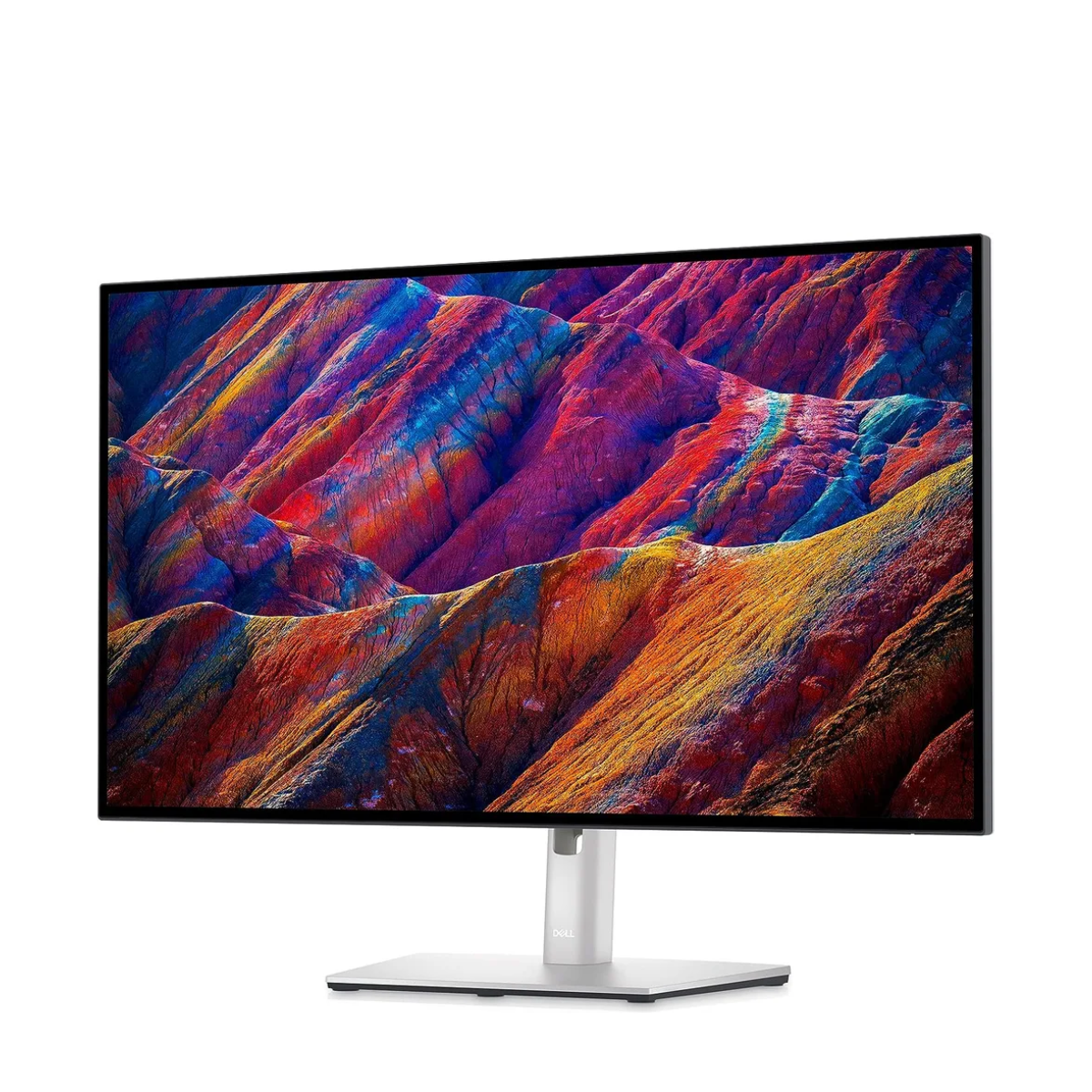
The Dell U2723QE is the best vertical monitor on the market right now, thanks to a gorgeous 4K UHD (3840 x 2160) display on a crisp 27-inch screen that delivers excellent picture quality.
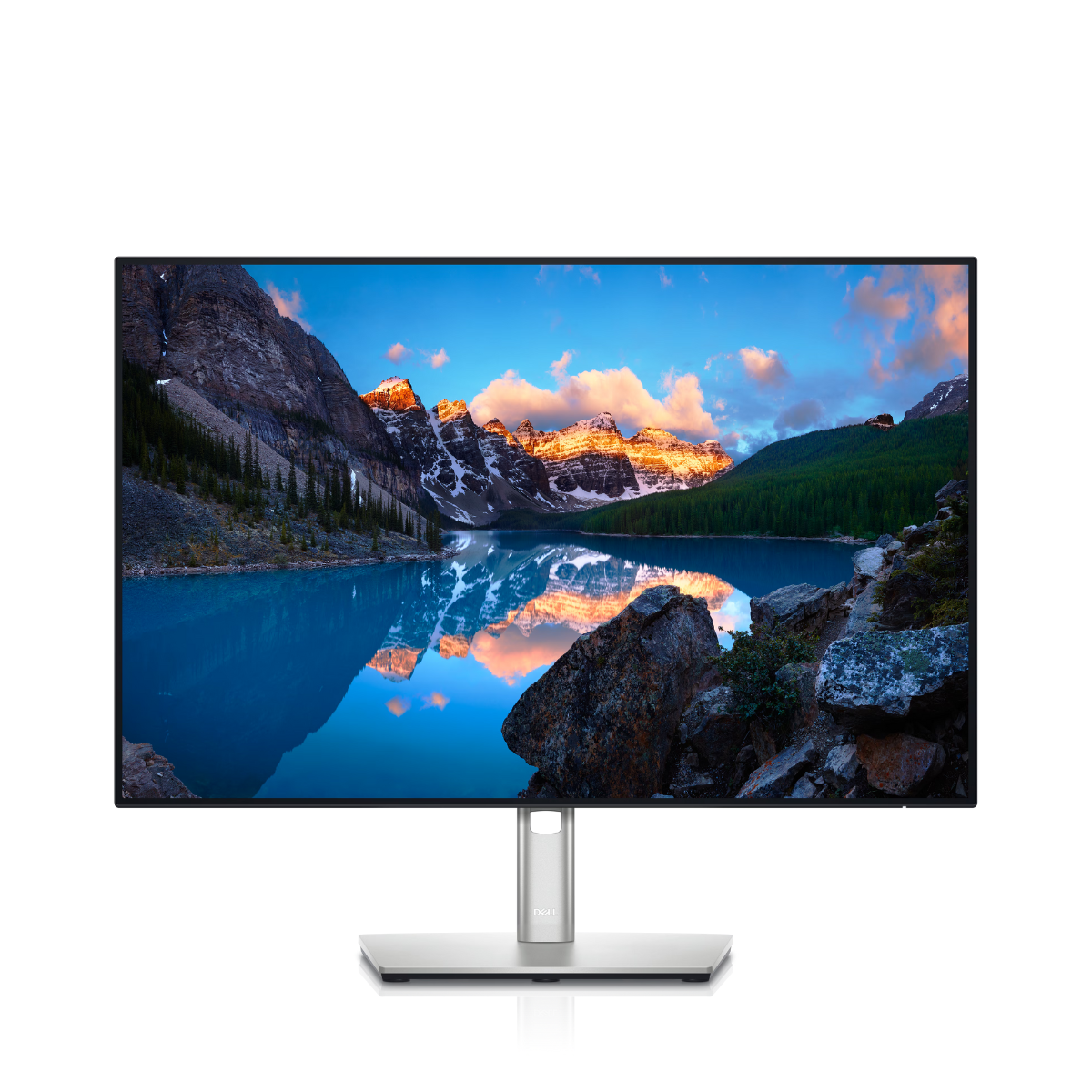
The Dell UltraSharp 24 U2421E is a 24-inch monitor with a 1080p resolution that's more than capable for a range of productivity tasks, watching movies, and more - all at an affordable price.
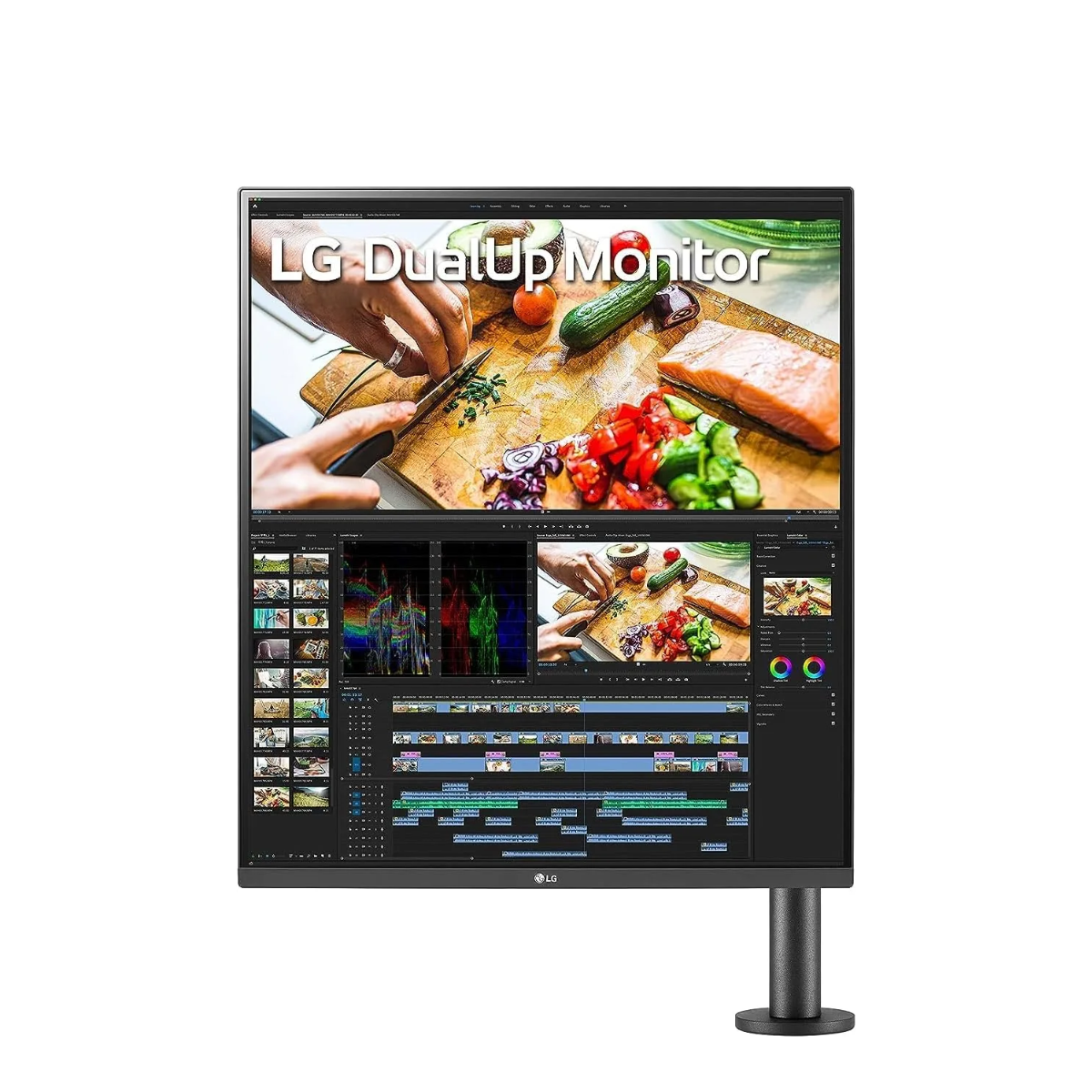
The LG DualUp 28MQ780-B serves up an impressive 18:16 aspect ratio when turned vertically, which offers loads of screen-space for everything from productivity tasks to editing images and video.
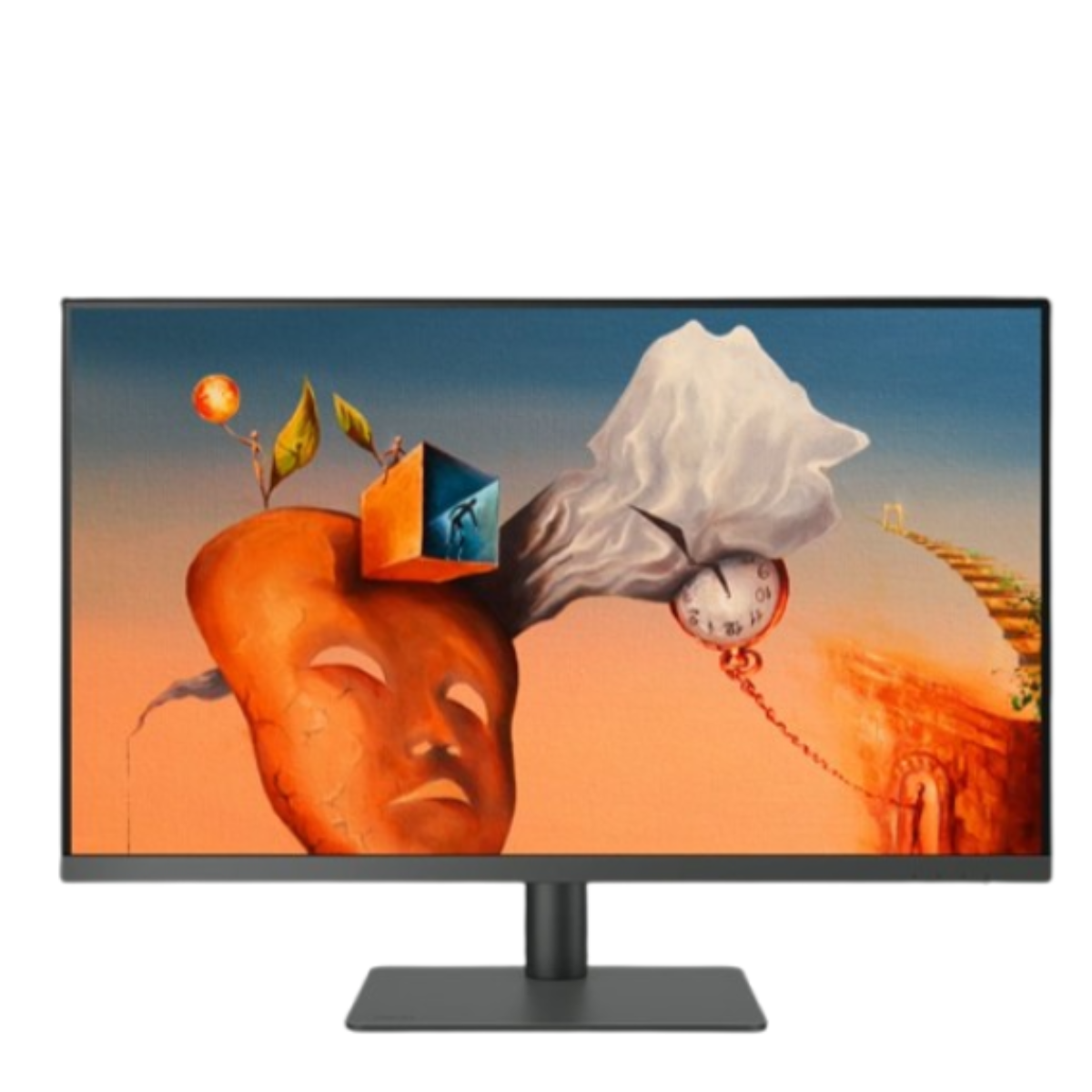
With an impressive range of design-focused features, including CAD/CAM Mode and Animation Mode, alongside excellent color accuracy, this Mac-friendly monitor excels for content creation.
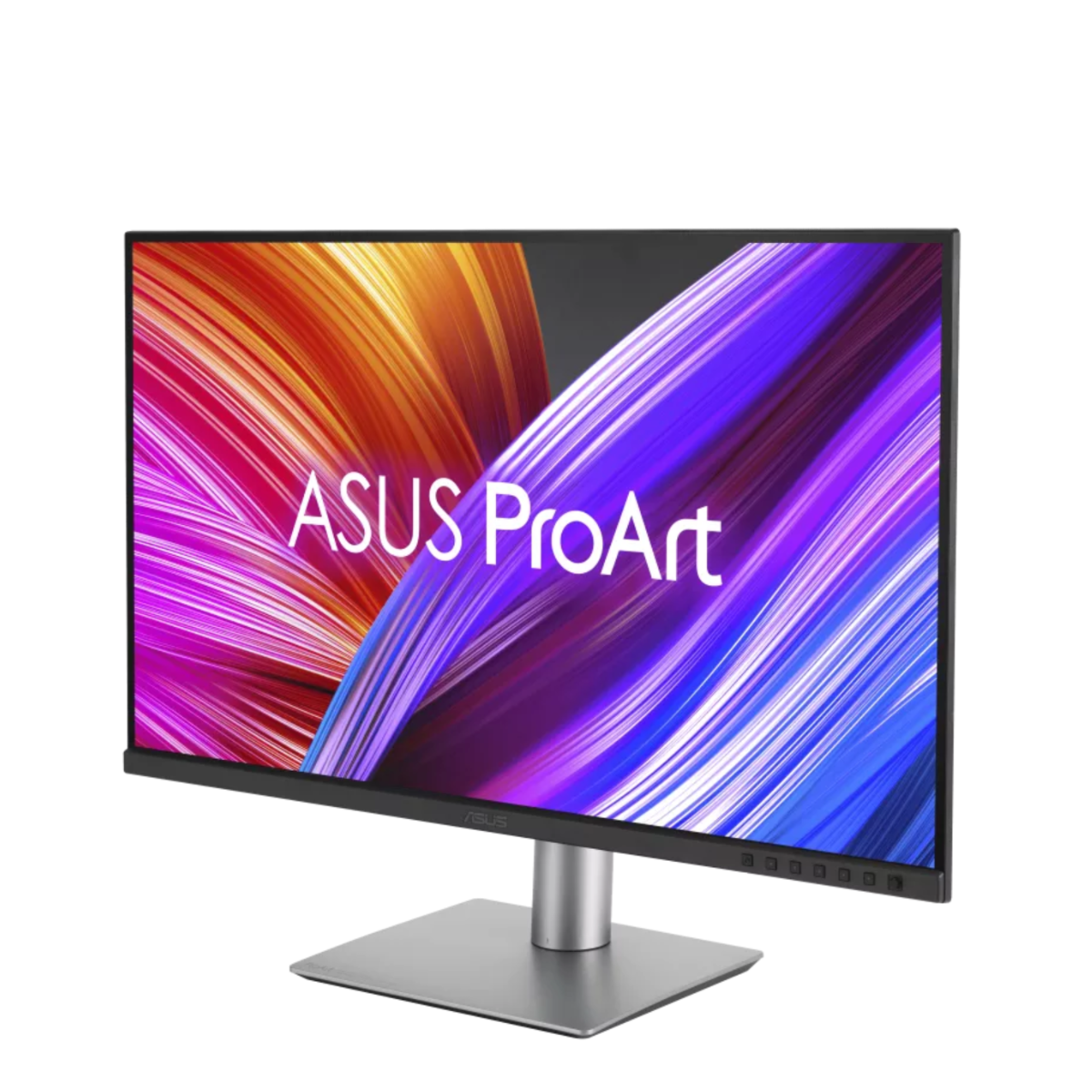
This has to be one of our favorite monitors - particularly since it delivers near pro-level picture quality without the price usually commanded by premium models.
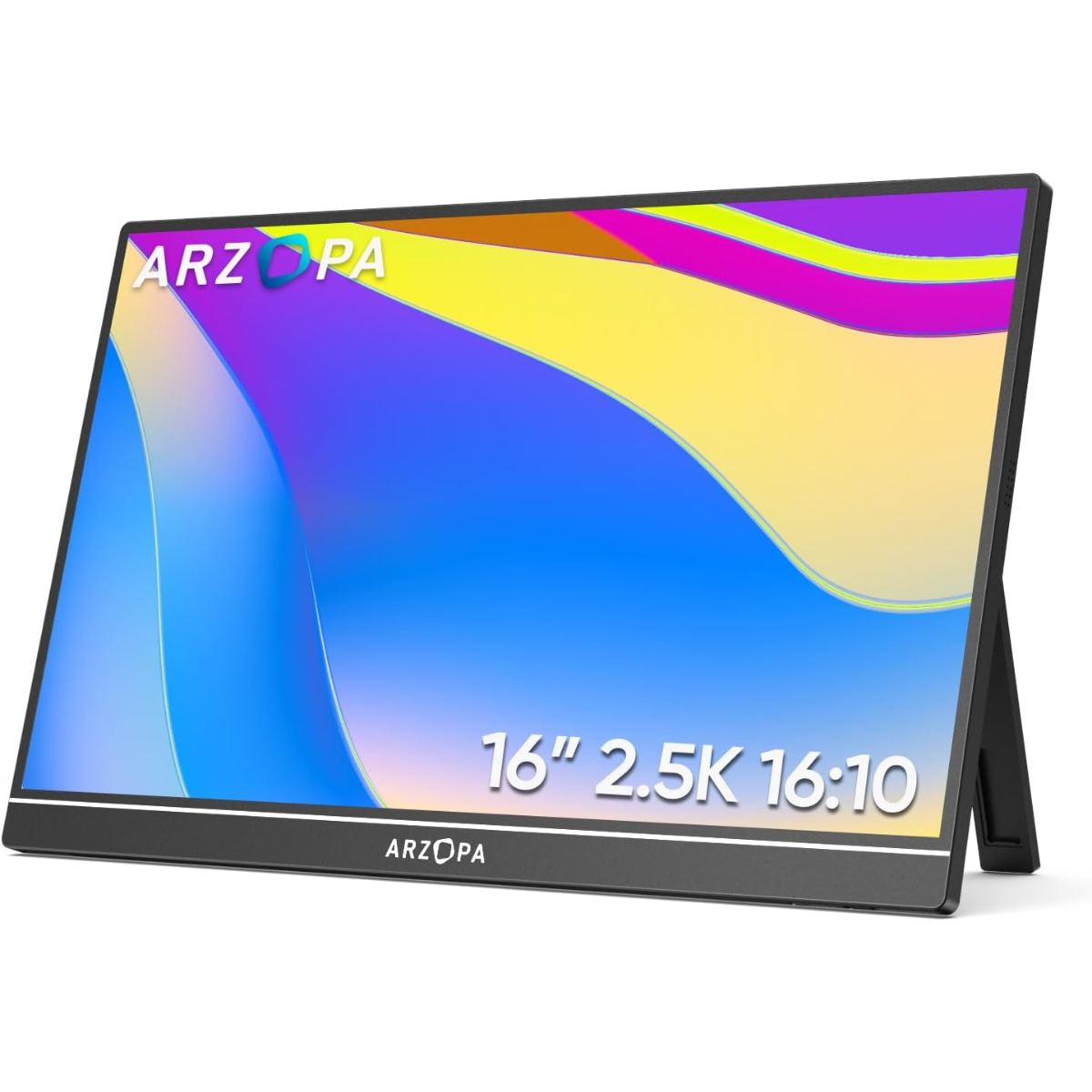
The Arzopa Z1RC is a highly impressive 16in portable monitor with a built-in kickstand that works in landscape and portrait mode. We also found the 2.5K resolution is excellent for this compact display.
Load the next products...
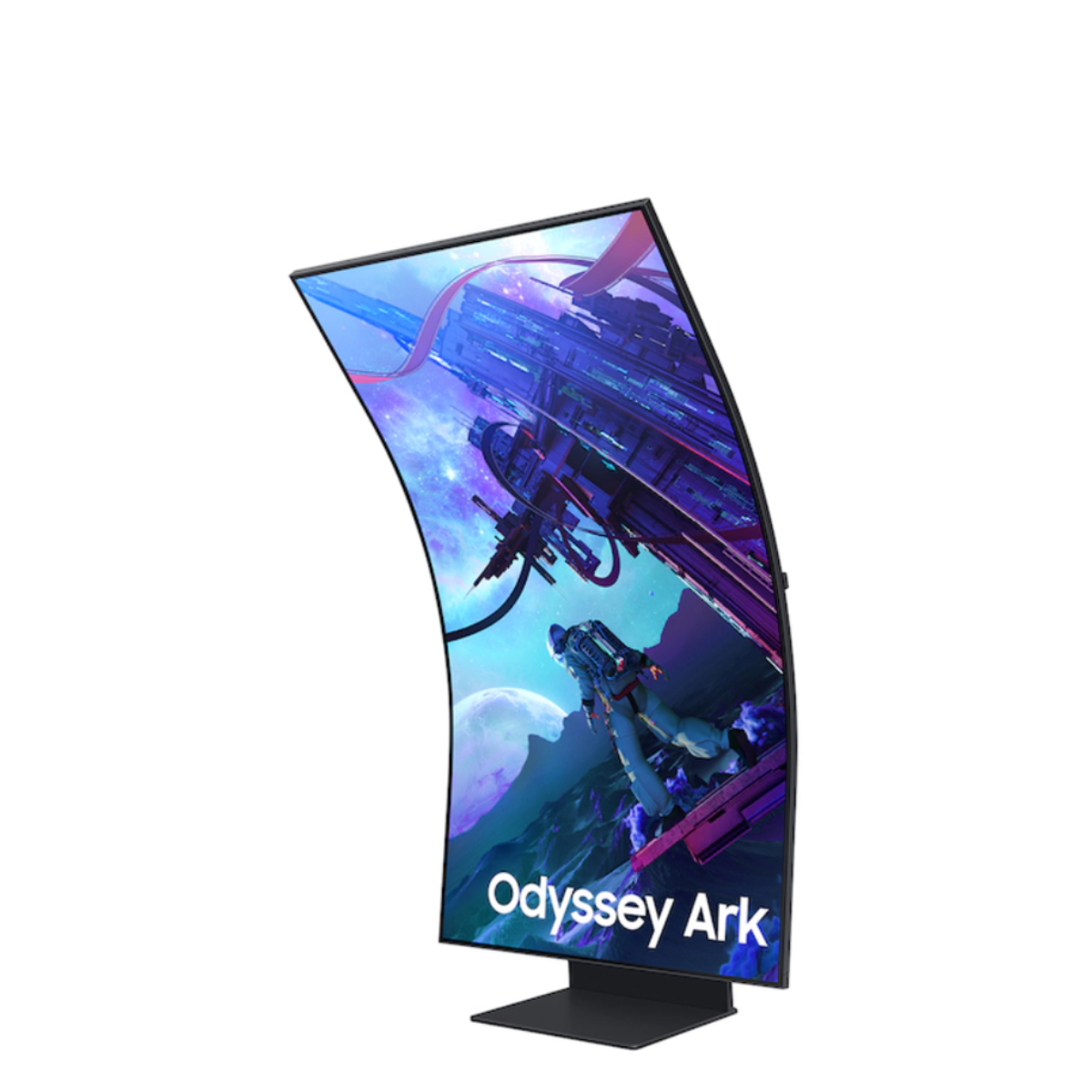
The Samsung 55-inch Odyssey Ark monitor offers an immersive experience, with the vertical Cockpit Mode putting you right in the action. It's especially effective for gaming and watching media.
Read more below
Best vertical monitor overall
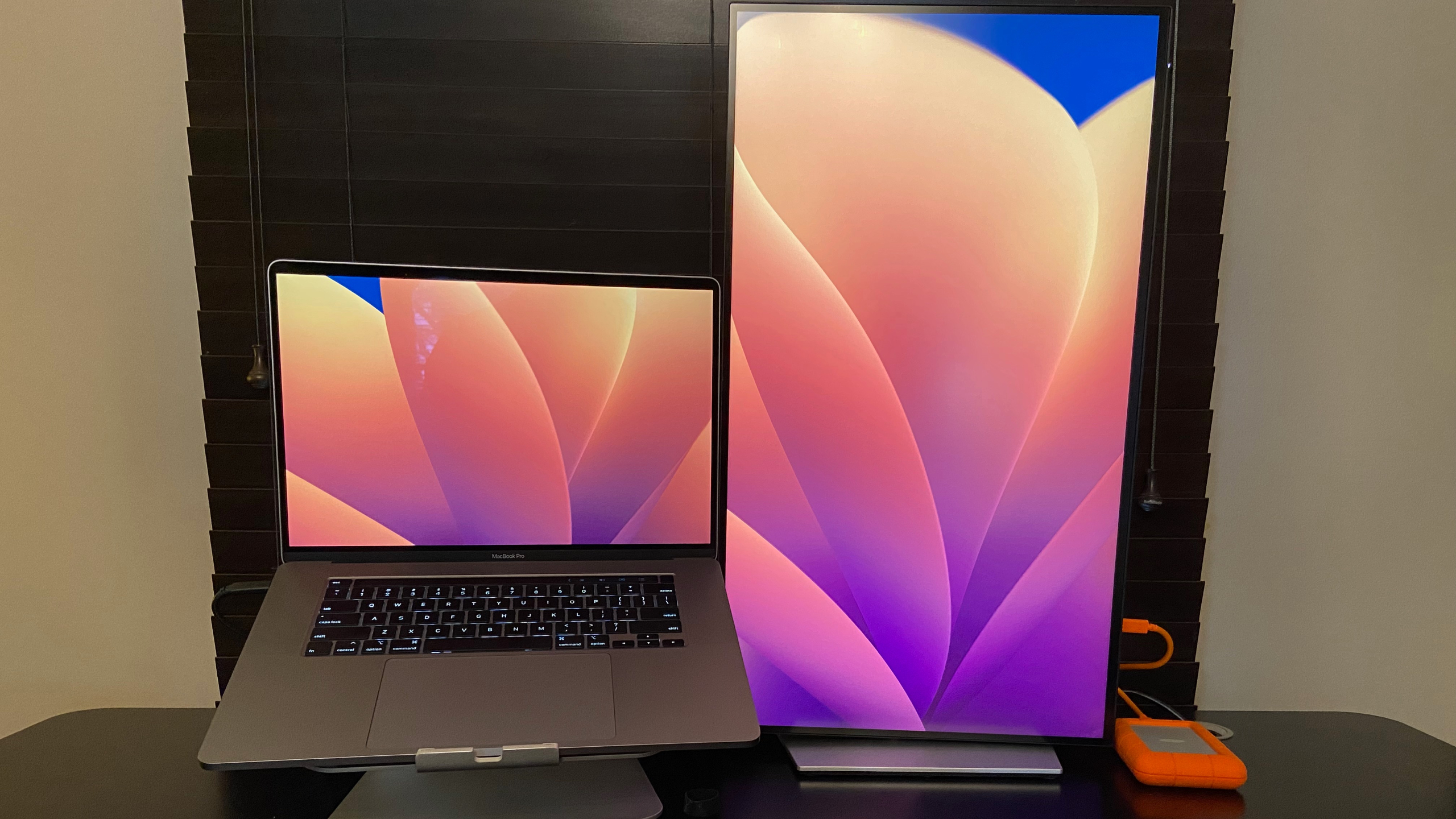
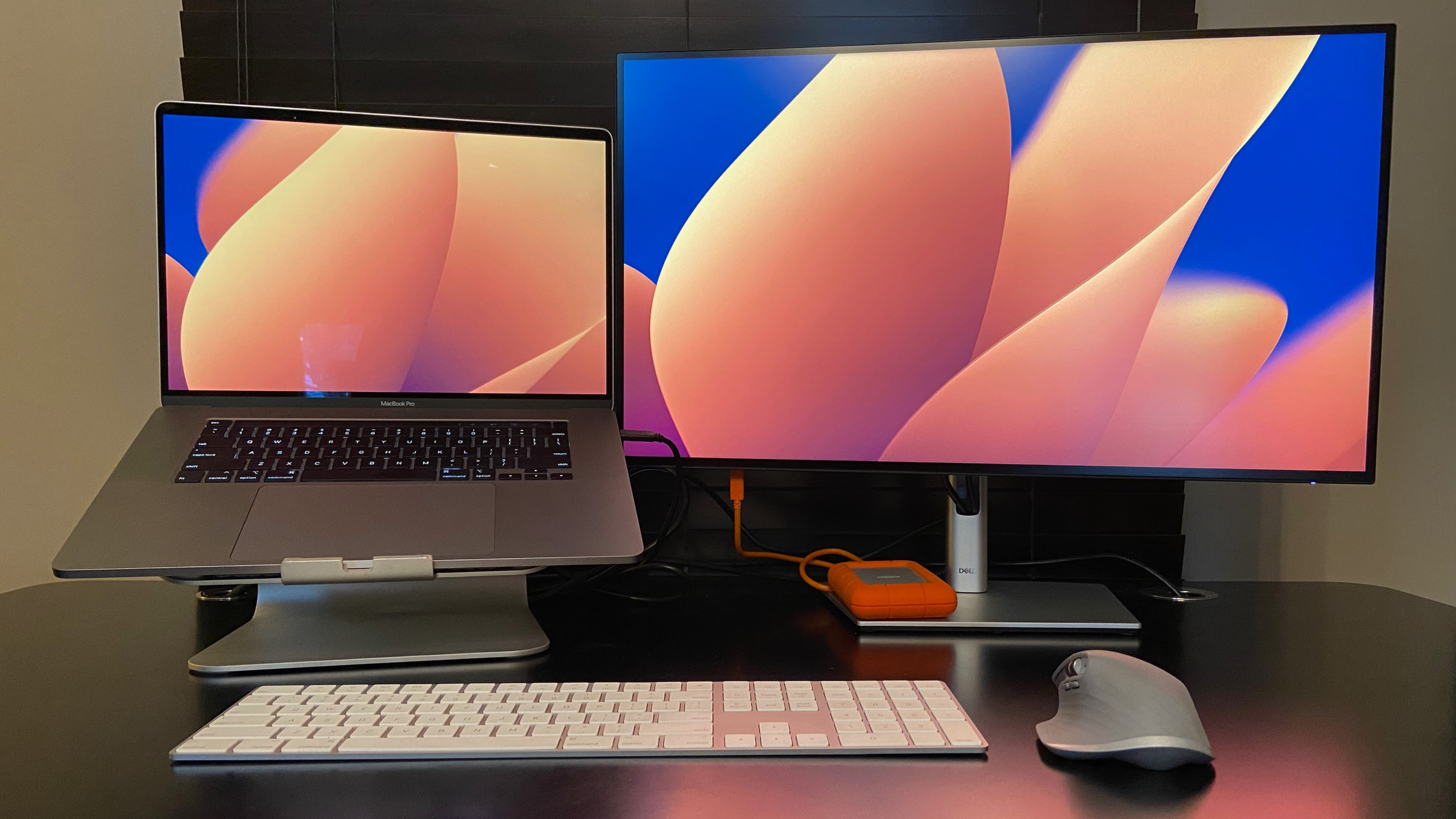
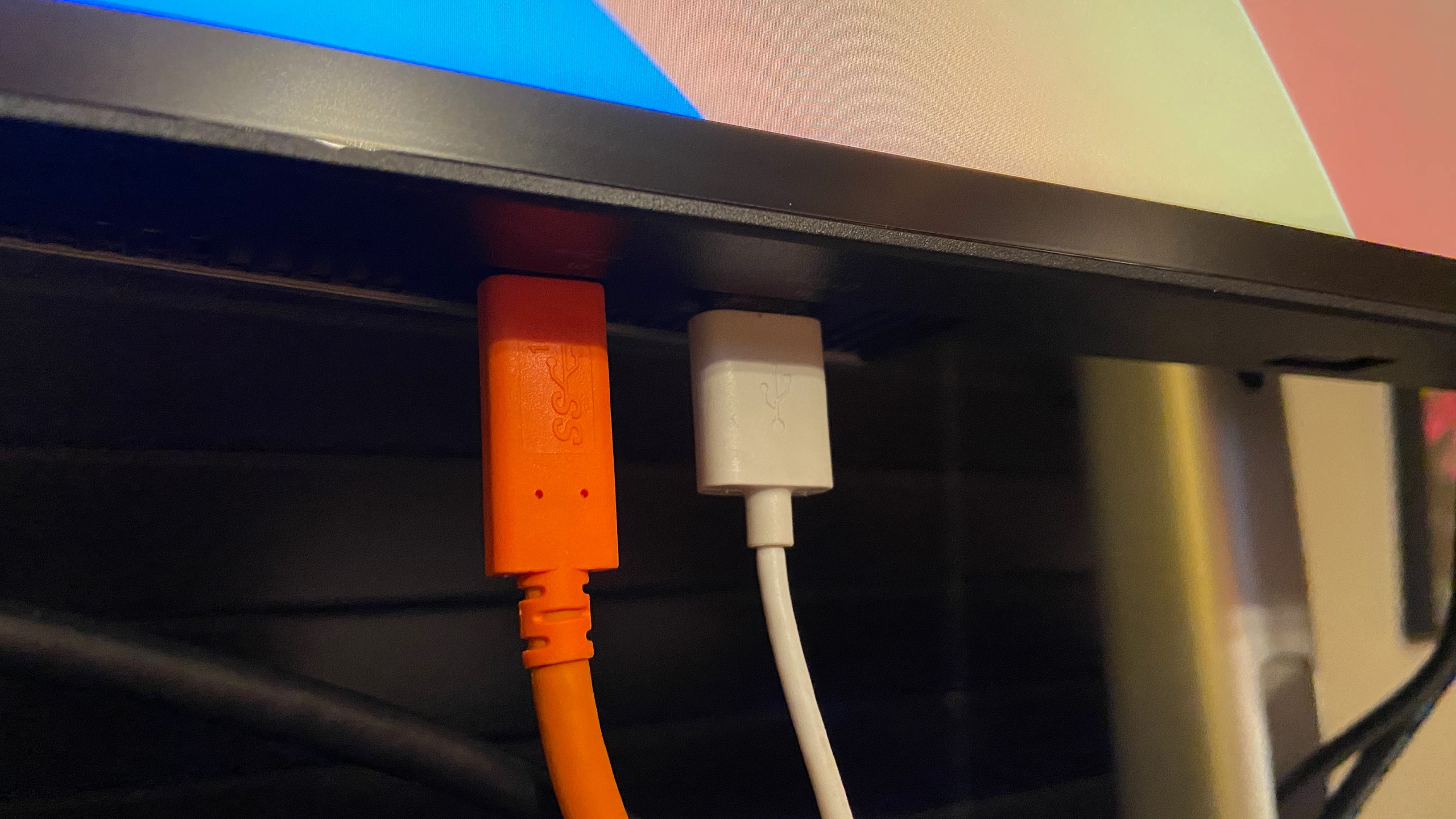
Specifications
Reasons to buy
Reasons to avoid
The Dell U2723QE is the best vertical monitor on the market right now, thanks to a gorgeous 4K UHD (3840 x 2160) display on a crisp 27-inch screen. Our own tests took place in a home office setting with multiple windows, where we found the monitor delivered accurate, true-to-life colors, while the anti-glare coating was effective in cutting out reflections from external sources. True, at 400nits, it's not the brightest monitor we've ever reviewed, but with HDR features and a 2000:1 contrast ratio, images came across as well-balanced.
The 27in panel served up more than enough screen real estate for a range of tasks, from running office apps to editing images and video. For those considering this for content creation projects, you'll be pleased - as we were - with the broad color space coverage, which offers 100% Rec 709, 100% sRGB, and 98% DCI-P3. In our book, the ability to select different color spaces (sRGB, Rec. 709, and DCI-P3) depending on whether you want to use it for data applications, web browsing, video editing, or graphic design work, makes it an all-inclusive and versatile monitor.
In terms of verticality, the U2723QE features full 90º +/- rotation for vertical screen orientations, as well as -5º/+21º Tilt and 60º pan. It also stands out with its wide range of connectivity options which include a USB-C port and four USB-A ports at the rear and one each at the bottom for quick access to flash drives - plus you can use the monitor to charge your laptop/smartphone, and that too, with up to 90W.
Read our full Dell UltraSharp U2723QE 4K USB-C Hub Monitor review
Best vertical monitor on a budget
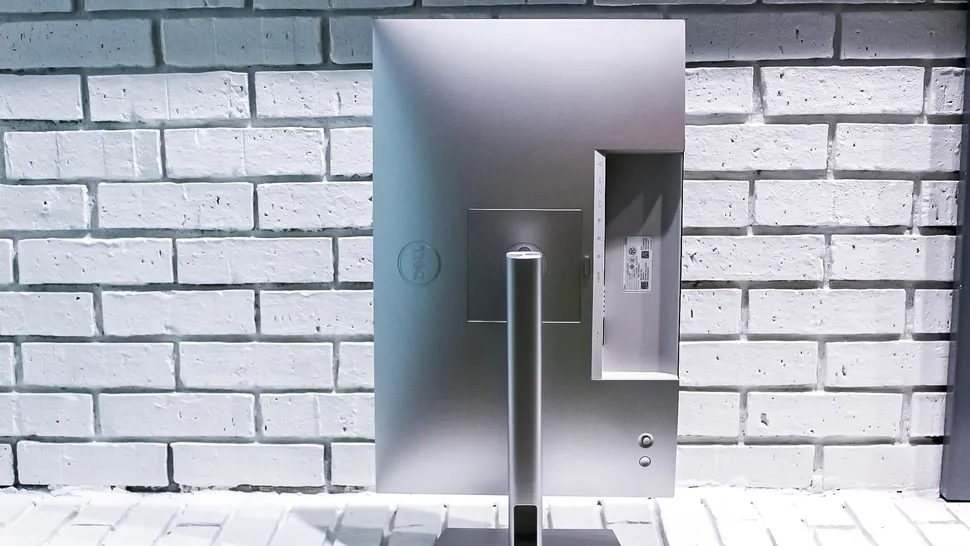
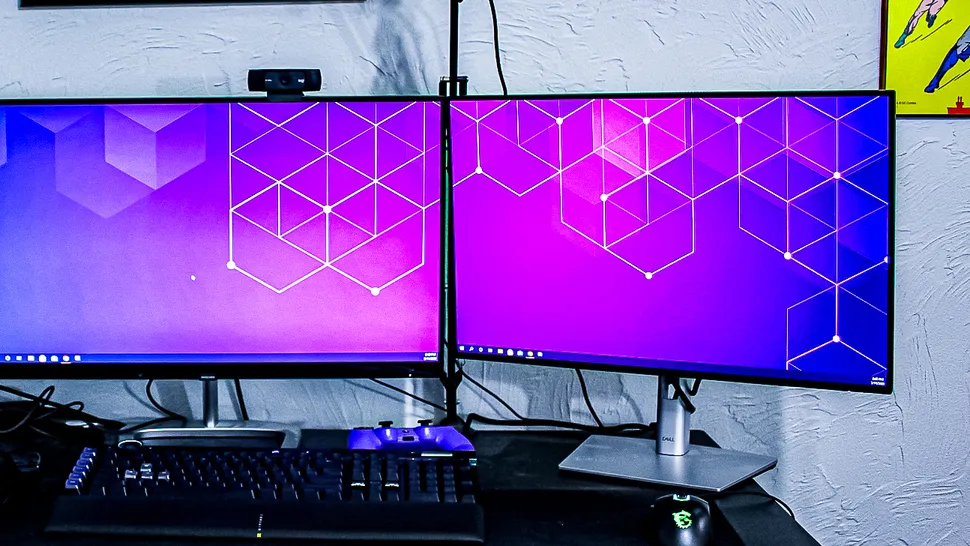
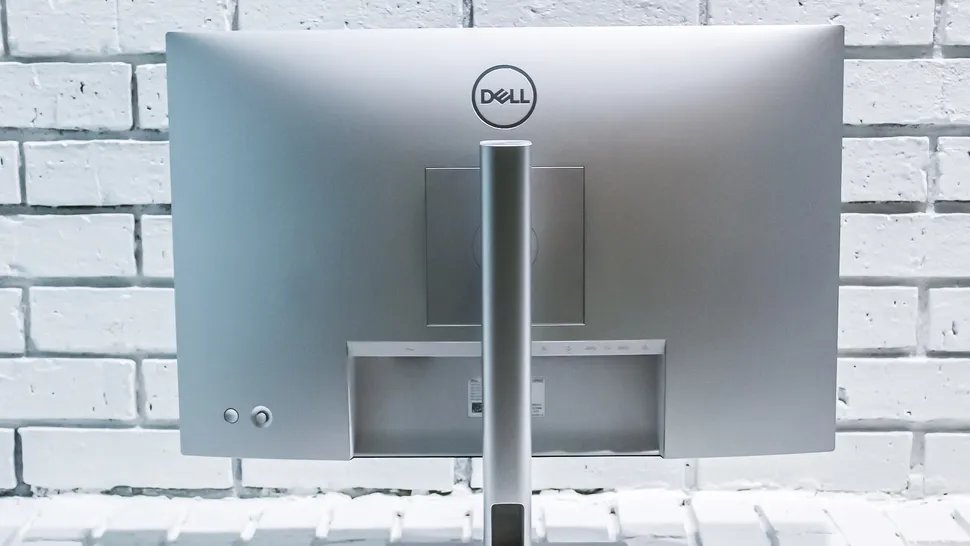
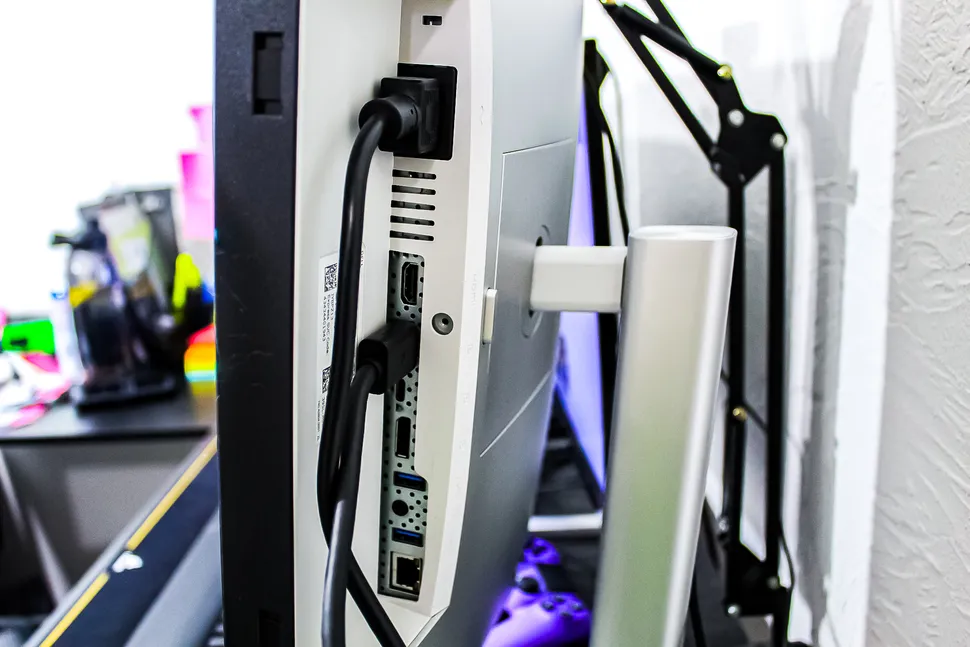
Specifications
Reasons to buy
Reasons to avoid
There are a few good options if you need a budget vertical monitor, with the Dell UltraSharp 24 being a good example. This is a Full HD 24-inch display that's effectively built for business use. But the size, 1080p resolution, and slightly older model make it a great pick for those looking for a bit more affordability.
We tested this monitor across a range of uses - from running office apps like Word and Excel, to playing videos and games. And while it should be no-one's first pick for gaming, it otherwise performed incredibly well. We found the LED panel produced a warmer color palette (visit the Google home-page or open a word processor and you'll see those whites are a lot softer compared to a Mini LED screen). This won't be an issue for most people, and overall, we felt details and contrast was great, as was the color saturation and accuracy.
Elsewhere, we like the inclusion of the USB-C hub, which gives this some multi-tasking functionality without the need to connect a docking station for all your peripherals. Otherwise, there are very few bells and whistles here, which helps keep the costs down.
It won't be for everyone - indeed, where 4K is the standard and as we push towards an 8K future, it might feel slightly out-dated. However, for general usage, we found it ticks all the boxes. That it easily switches between landscape and portrait orientations is the icing on the cake.
Read our full Dell UltraSharp 24 review
Best vertical monitor for 18:16

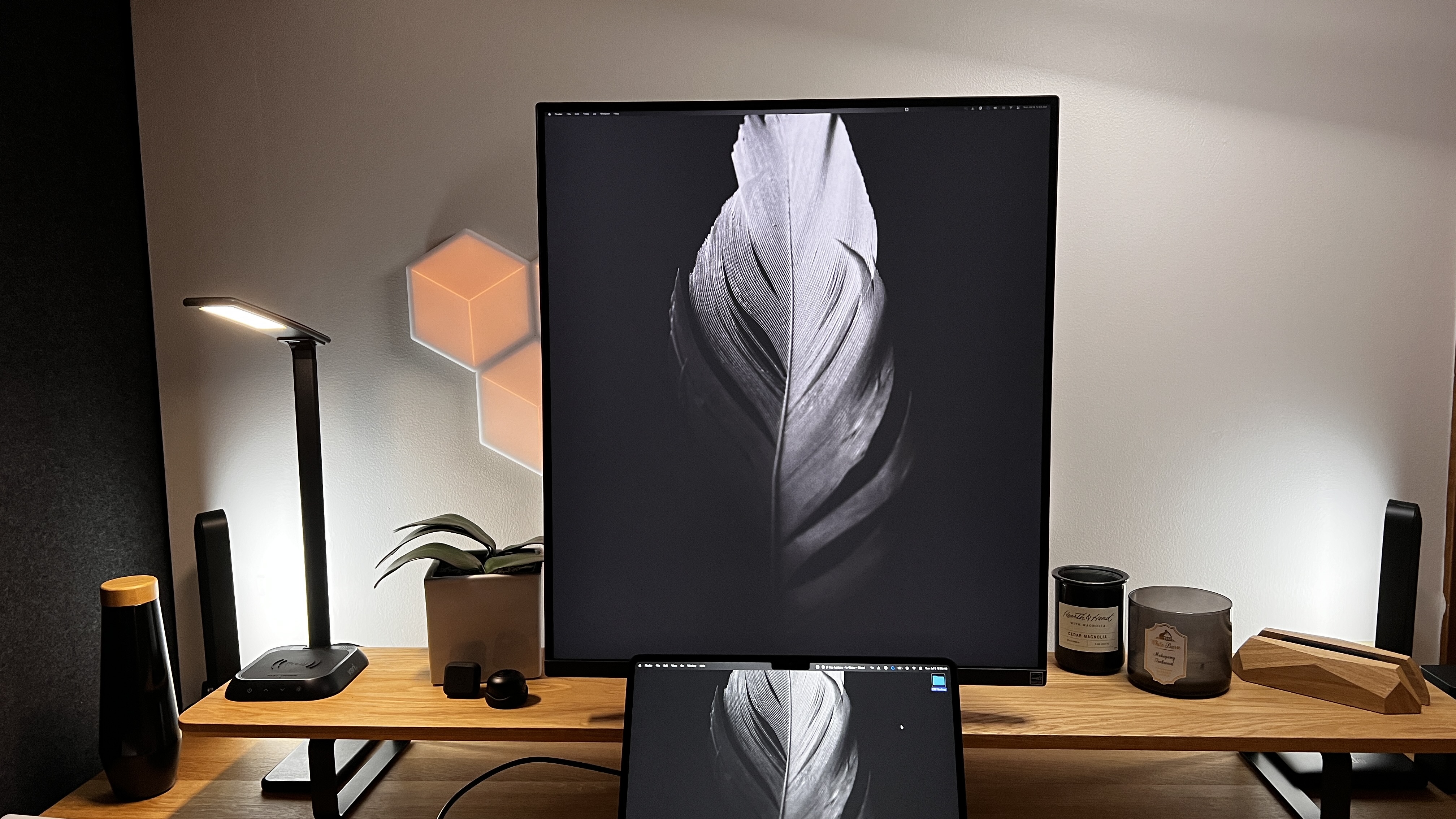
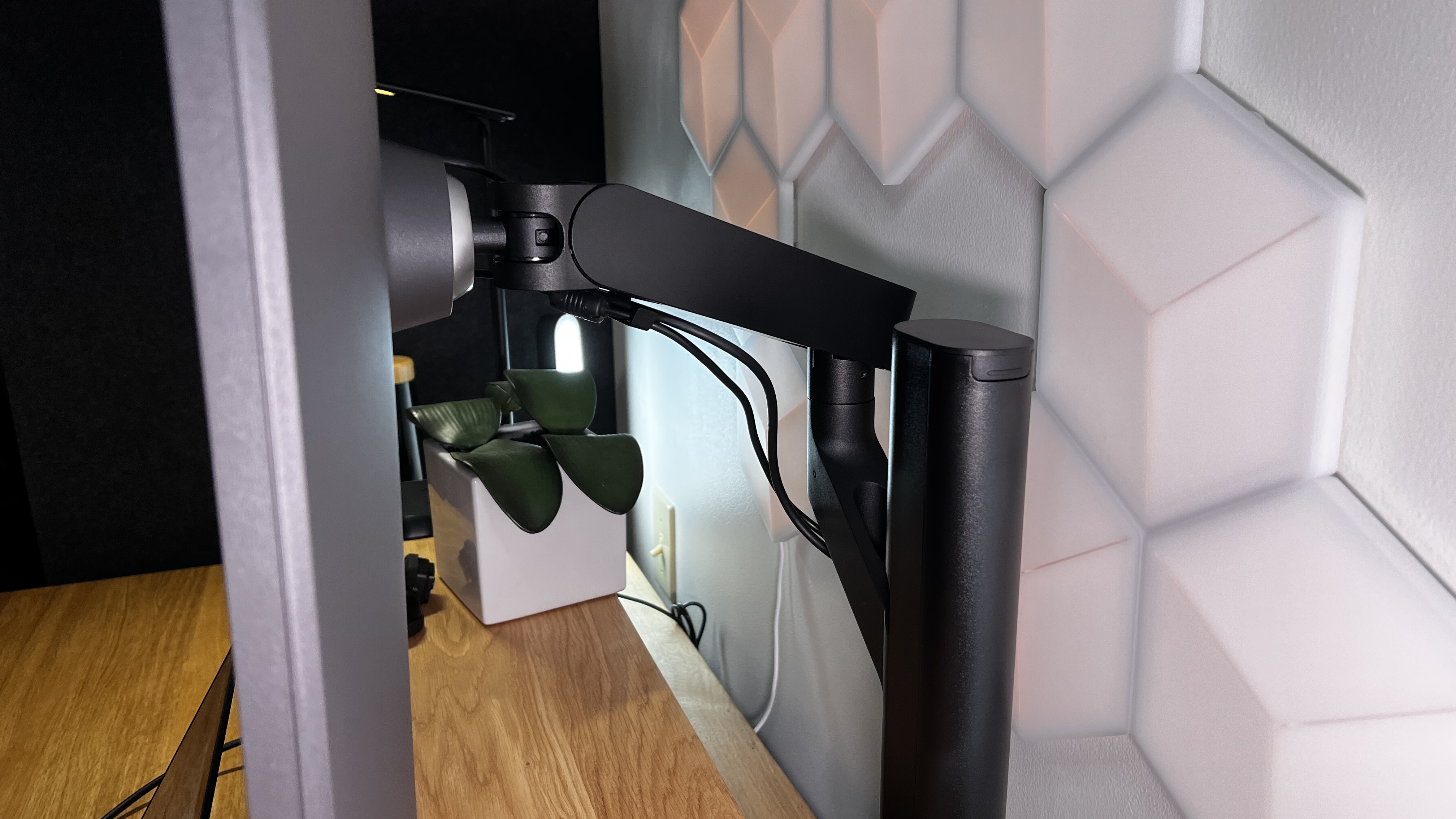
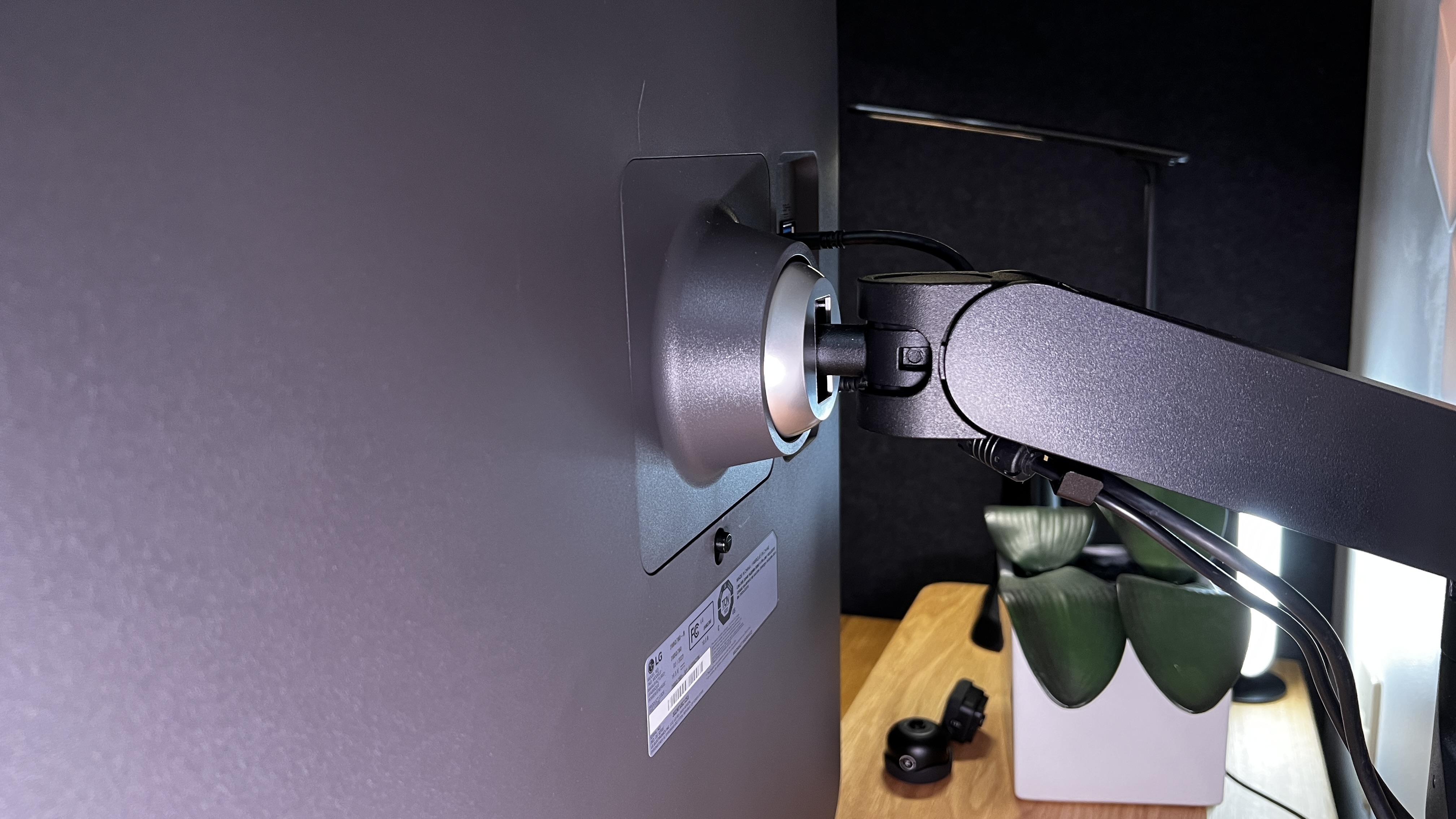
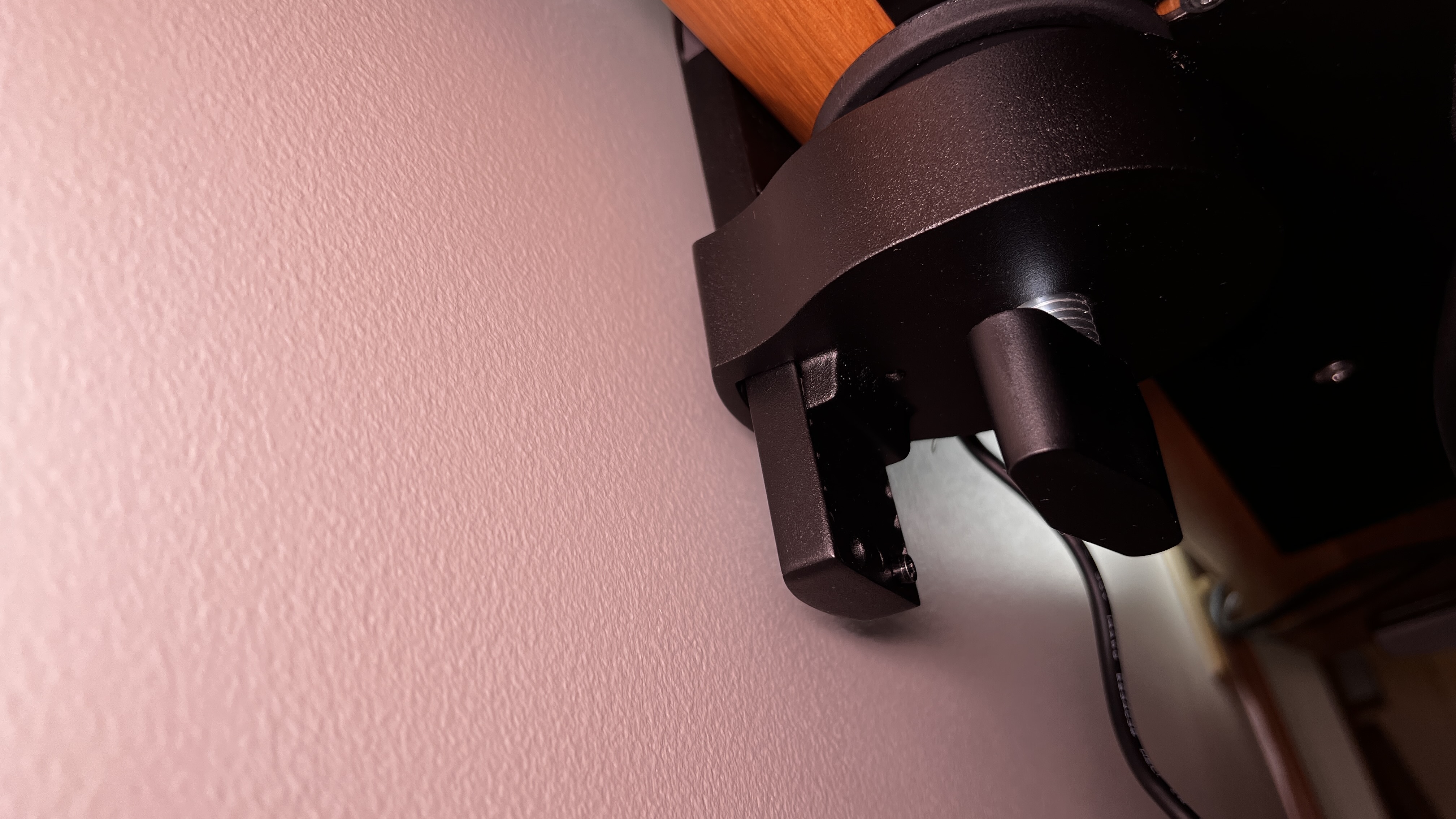
Specifications
Reasons to buy
Reasons to avoid
The LG DualUp 28MQ780-B is simply put, the best-looking vertical monitor, courtesy of its 18:16 aspect ratio when turned vertically. The unique resolution presents unparalleled opportunities for editors who can launch a typical photo/video and still have enough room left on either side for the program’s tools and settings.
We tested this monitor for two months, using it for a wide range of jobs, from productivity tasks to content creation, and we found it performed fantastically throughout. And top marks for the display's built-in "ergo arm", which let us move and adjust the monitor into exactly the right position without fail every time. In fact, our reviewer stated that "Every other monitor I use now falls short after using this screen for so long."
It's very easy to hook up computers and laptops, and switch between the devices at will, or even project both on the screen at the same time. Although its recommended use is as a second monitor - as is the case for most vertical monitors - the fact that it’s effectively the same as two standard 2560 x 1440 monitors stacked on top of each other means that you can easily use it for your day-to-day activities as well. Simply put, it gives you the best of both worlds.
Read our full LG DualUP Monitor review
Best vertical monitor for creatives
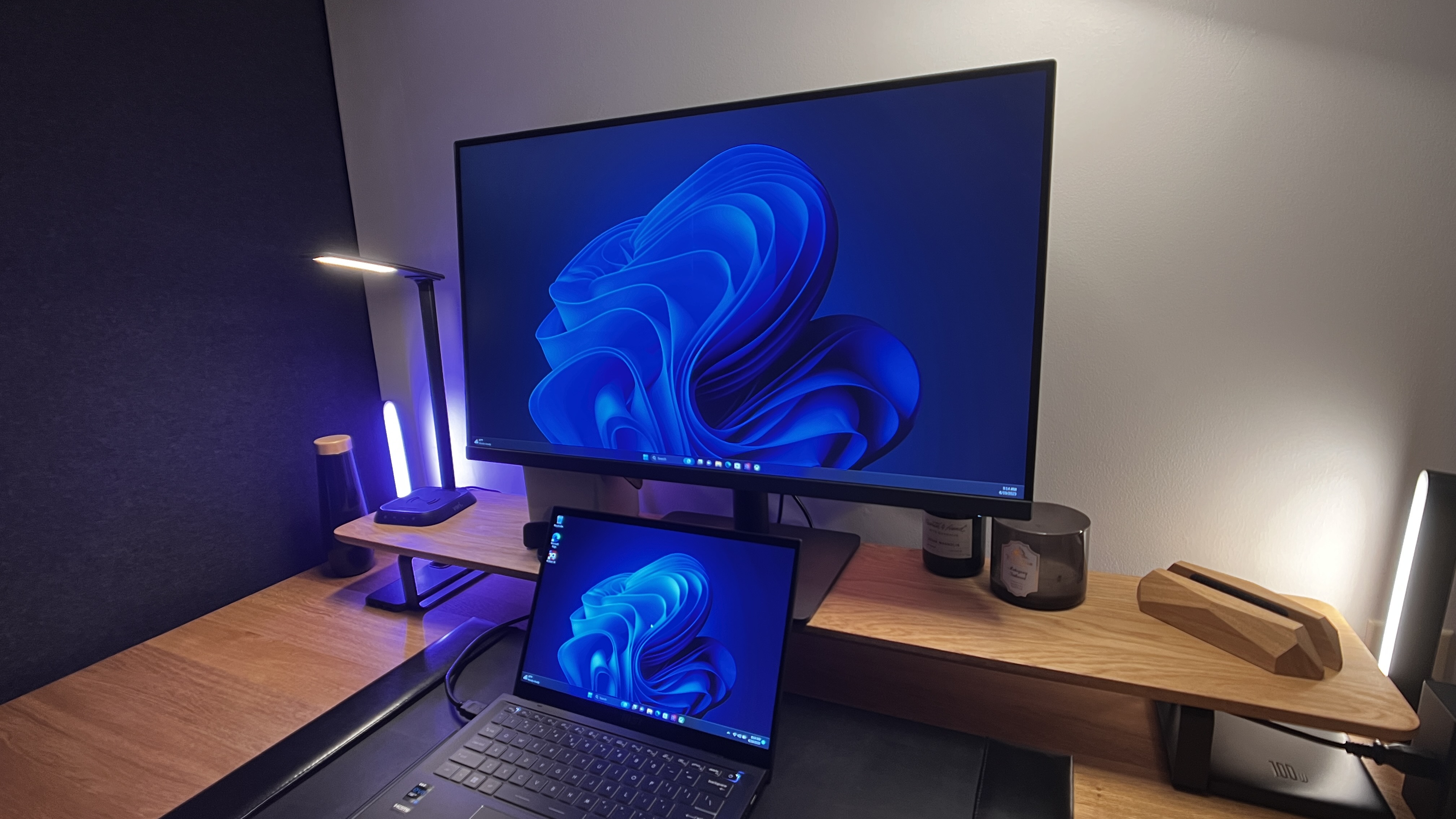
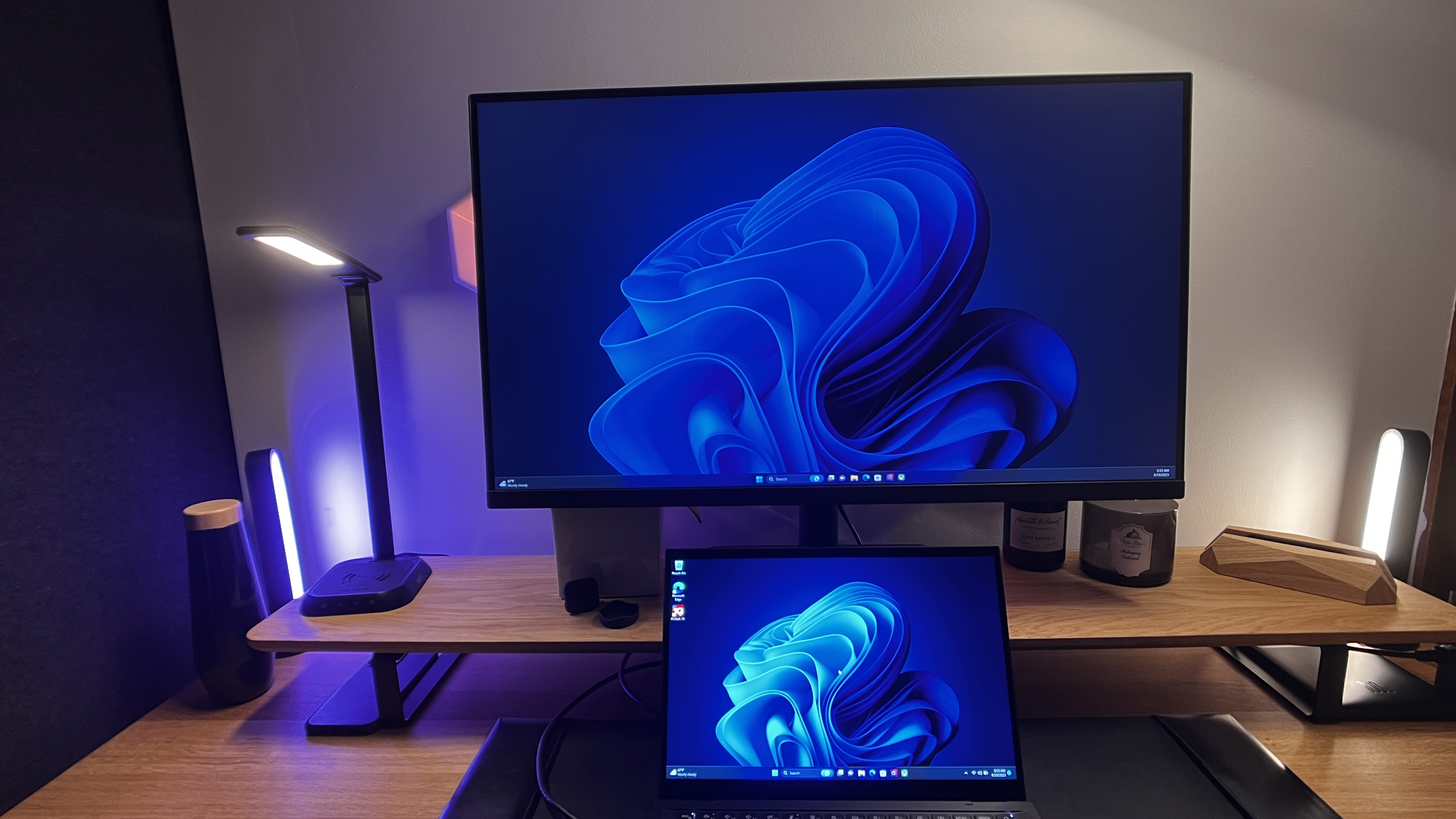
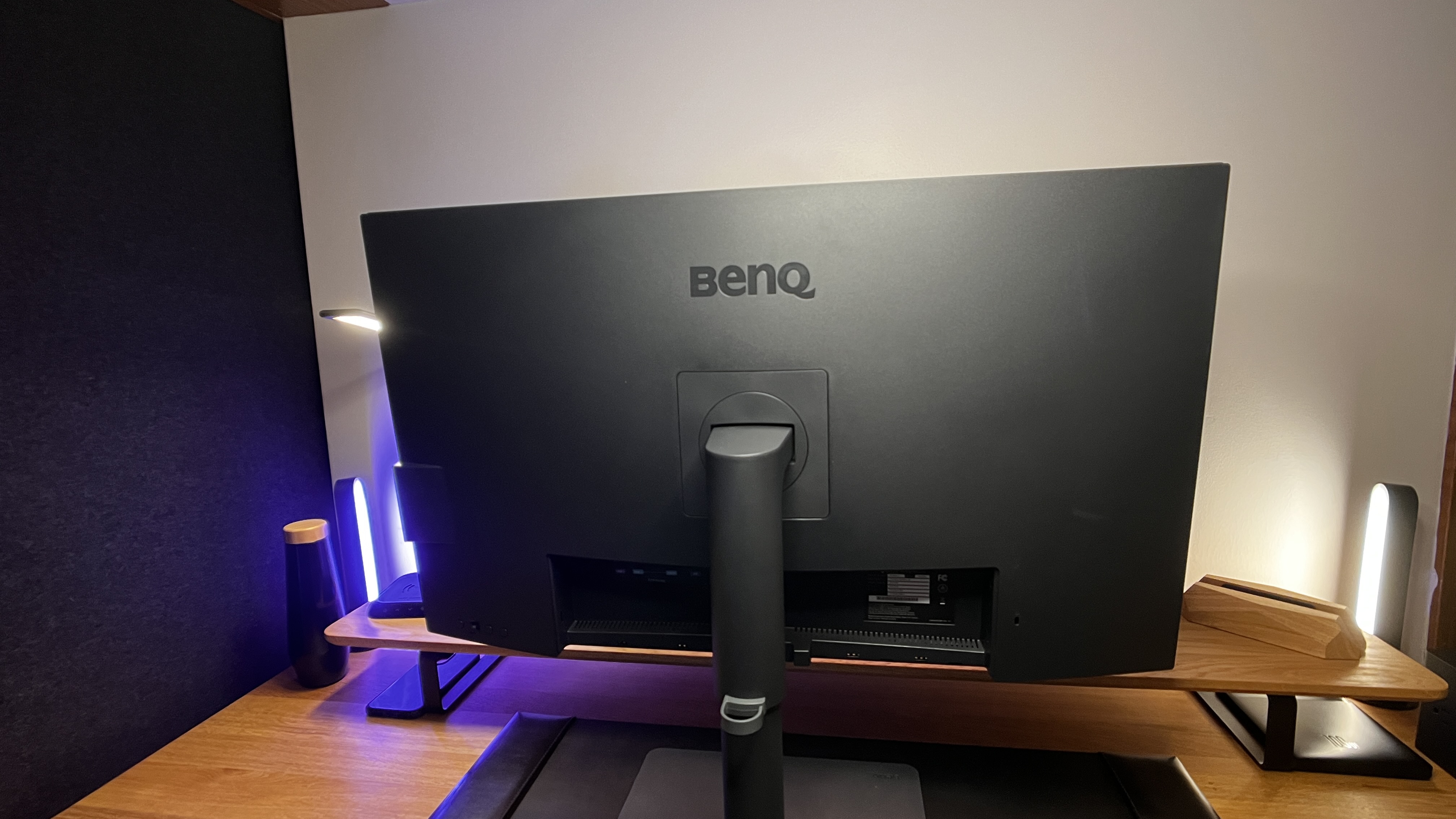
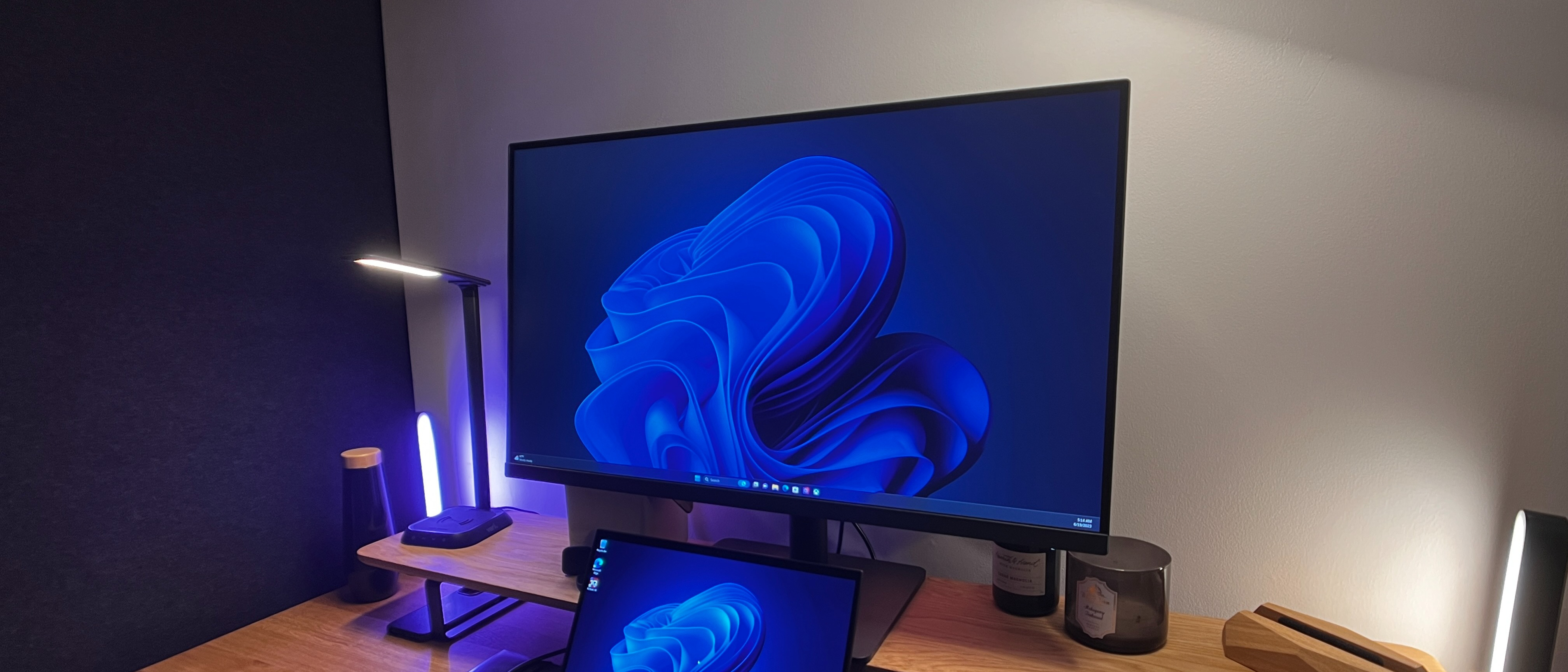
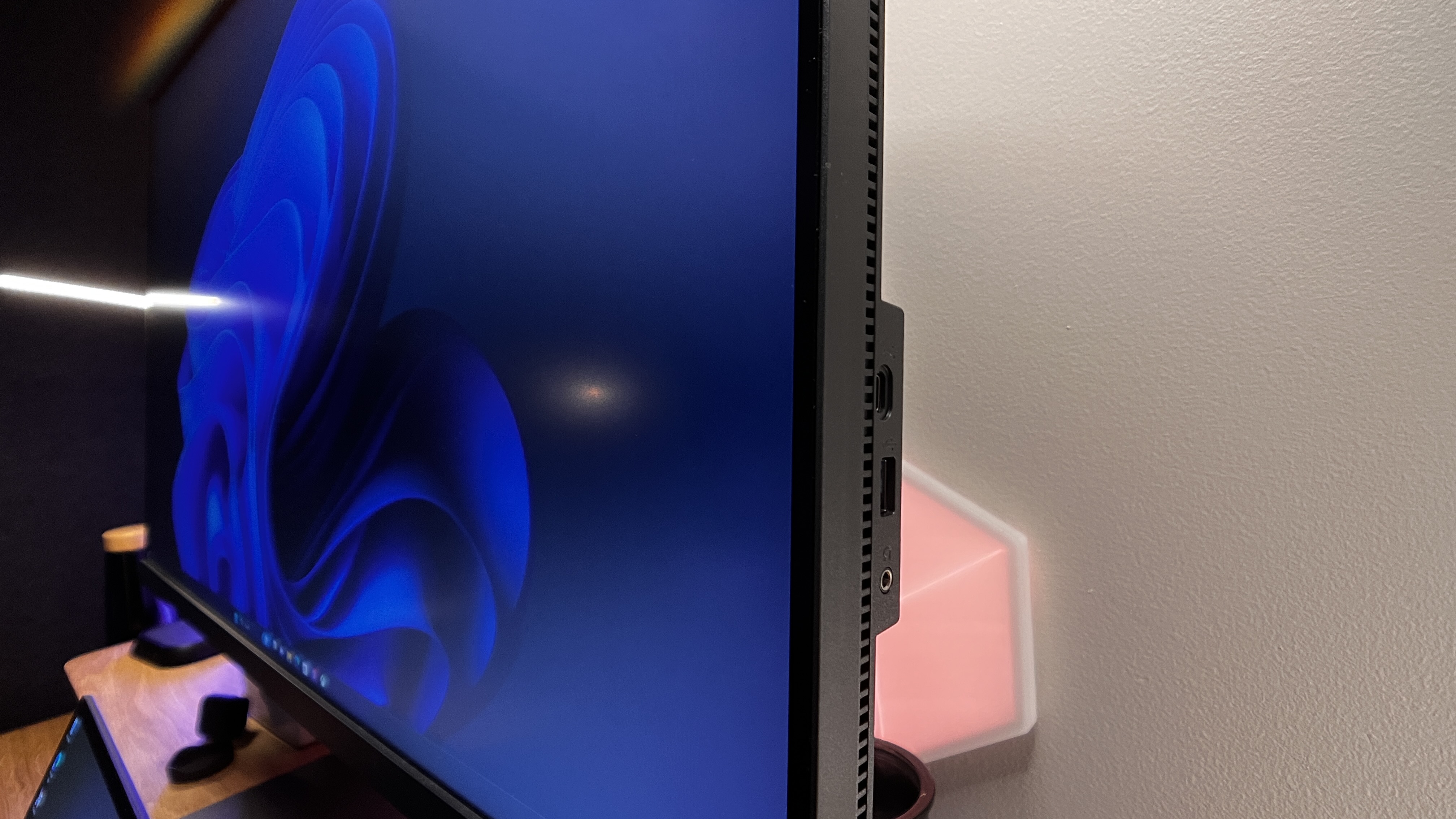
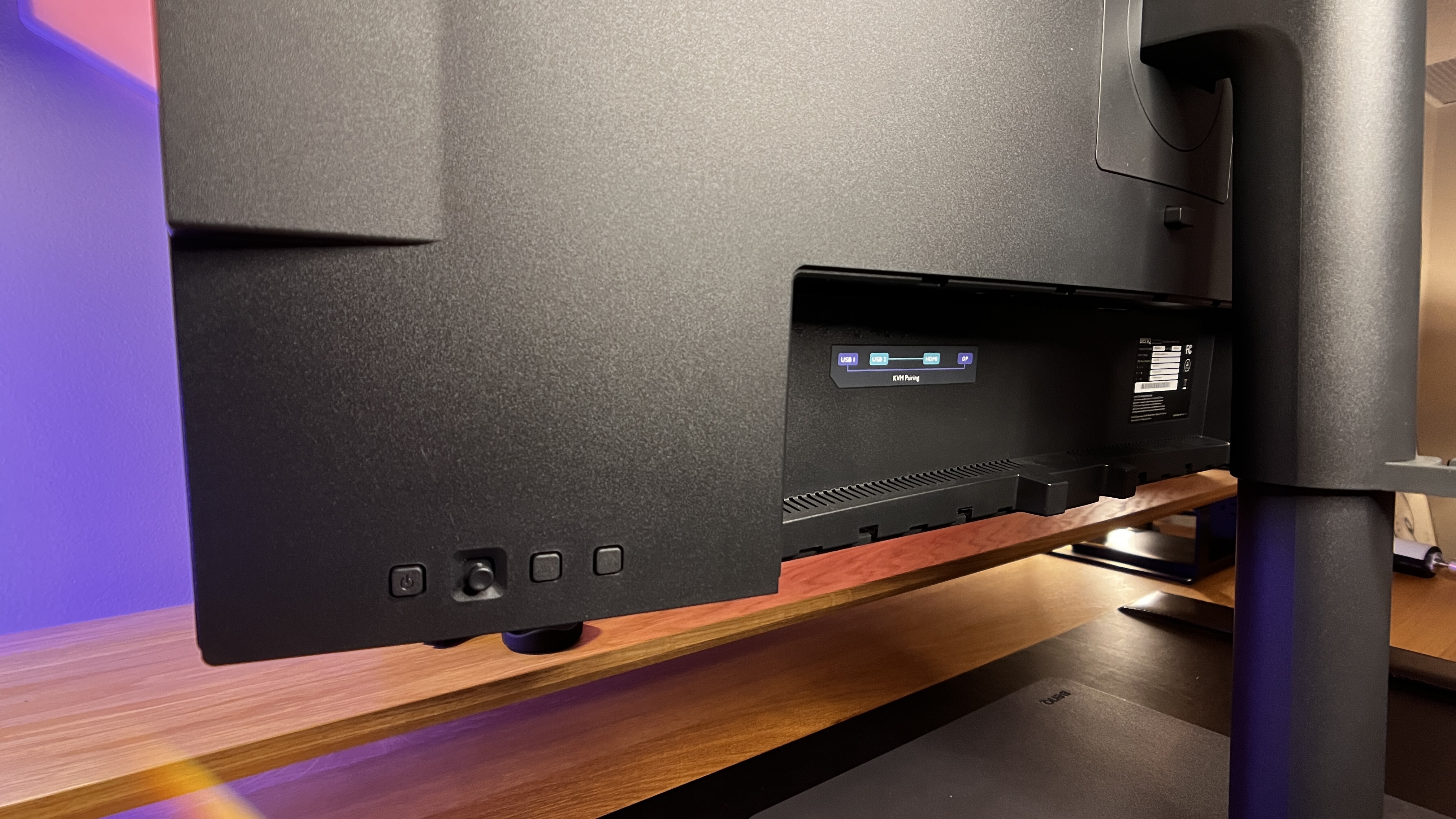
Specifications
Reasons to buy
Reasons to avoid
Beyond its ability to switch between landscape and portrait orientations, there's a lot to like about the BenQ PD3205U if you're using it for creating content. After all, that's what this display was designed for, with a host of features for designers, including an Animation Mode, CAD/CAM Mode, and factory-calibrated color accuracy. There's even a so-called M-Mode, which better serves those using this with Mac and MacBooks - the creative industry's favored devices.
During our own testing, we found videos and images were immaculate - to the untrained eye, they'll look as close to perfect as you can get, especially at this price. In terms of color space coverage, the monitor hits 99% sRGB and 99% Rec. 709, with Delta E ≤3. We also discovered that the 32in screen felt even larger, thanks to some dazzling colors and the high resolution - especially coming from a 13in MacBook.
We also tried out the included Hotkey puck, which lets you seamlessly switch between USB-C, HDMI, and DisplayPort connections without disrupting the entire workflow. The puck also gives you greater control over a range of other options, selected by the user, like changing the color space or altering the brightness.
It may not be the brightest vertical monitor we've used, the color space doesn't hit 100%, and the design is still a bit low-key considering the focus here is on design. But considering the price, this is an excellent pick for creators.
Read our full BenQ PD3205U review
Best mid-range vertical monitor
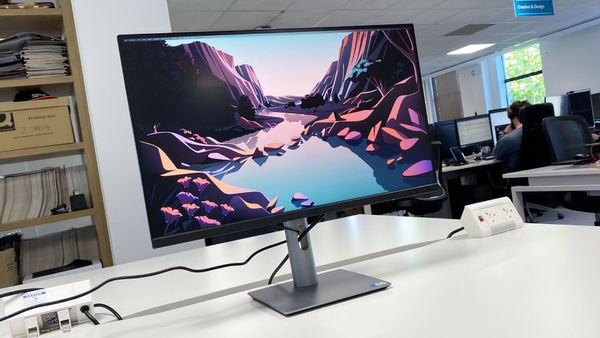
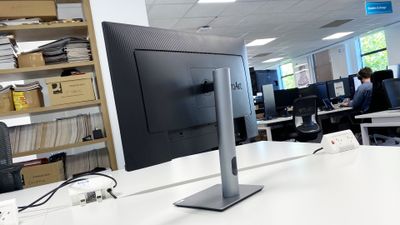
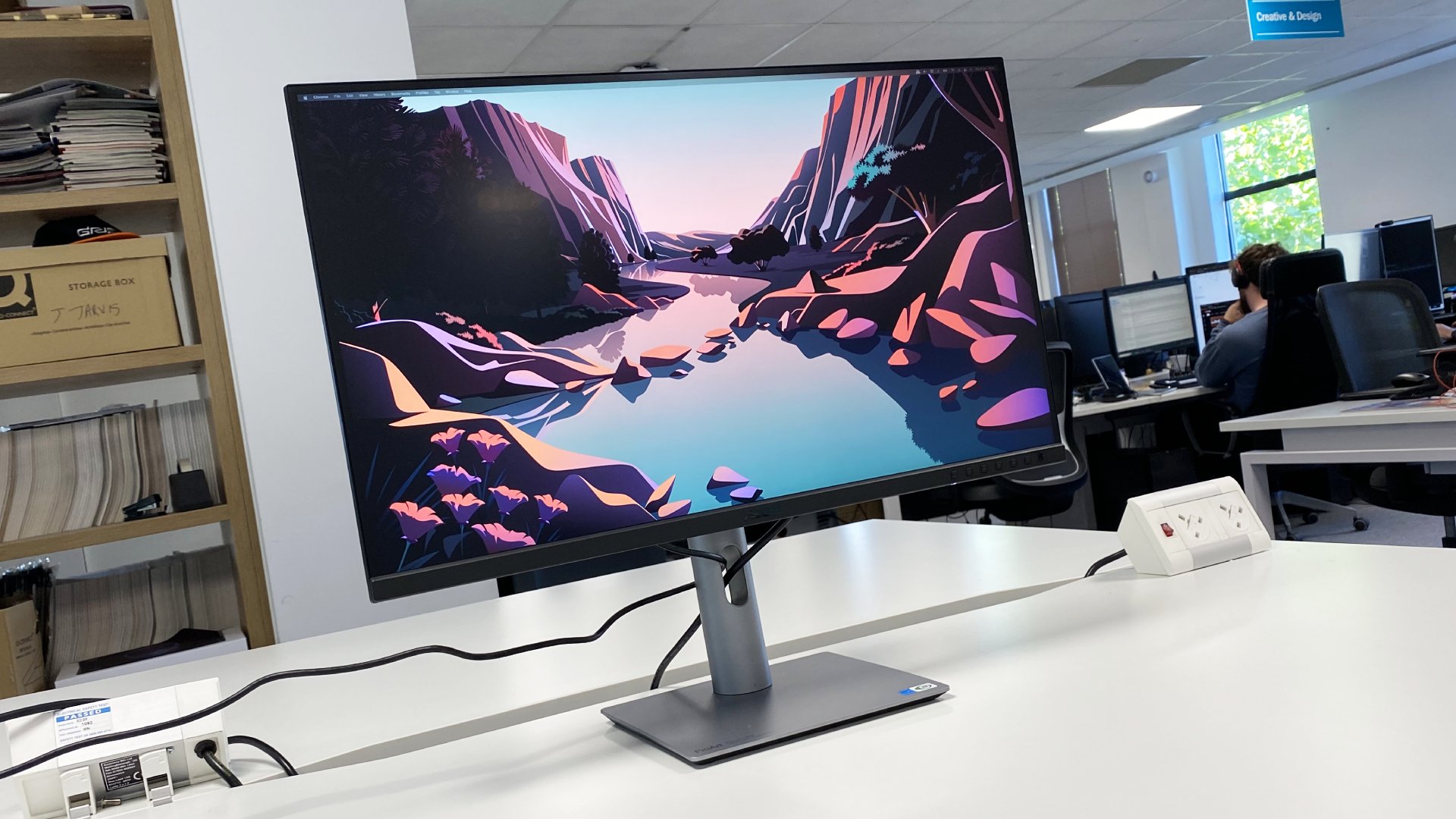
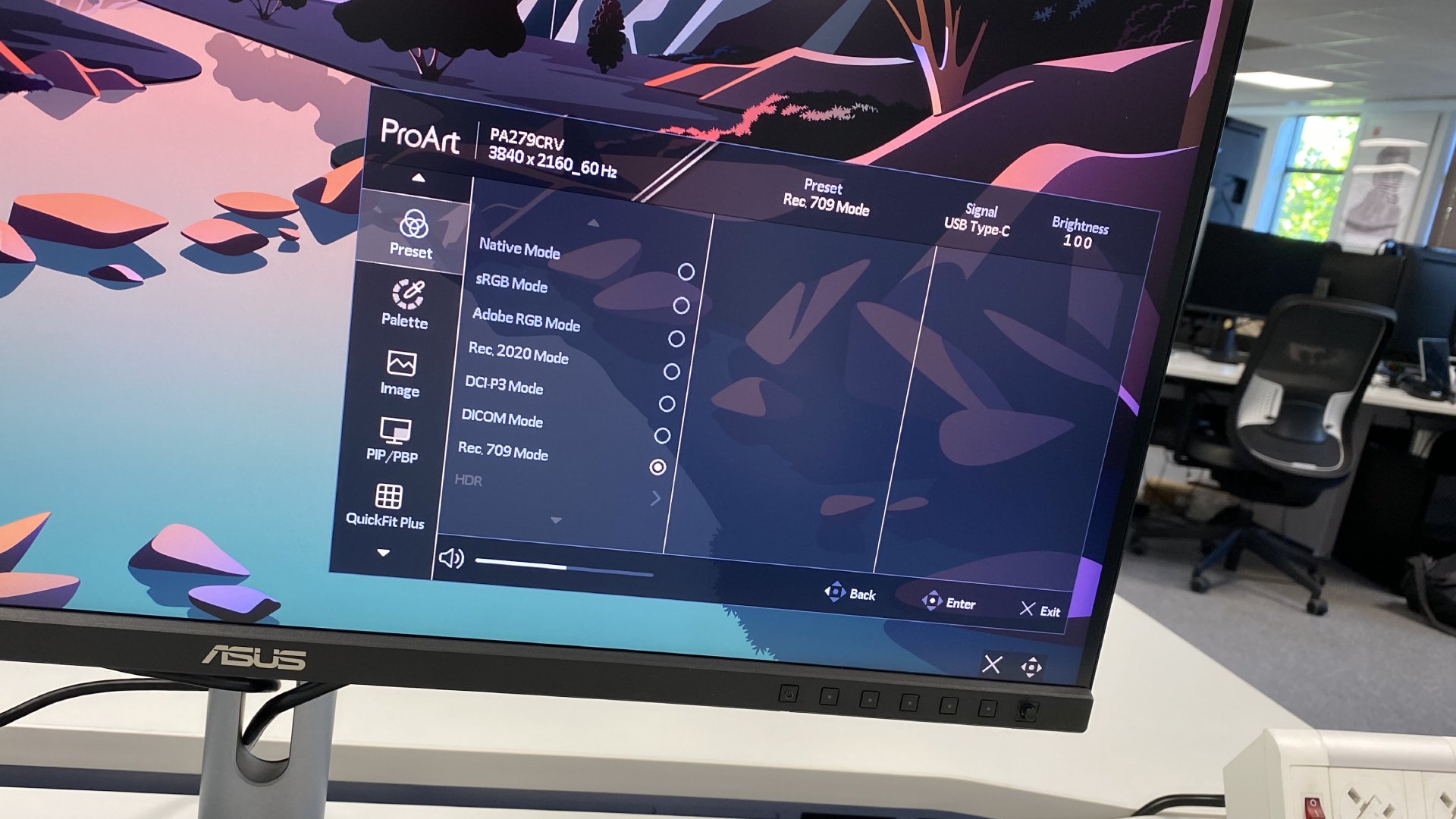
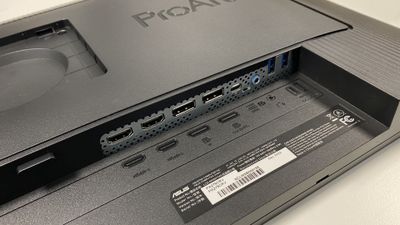
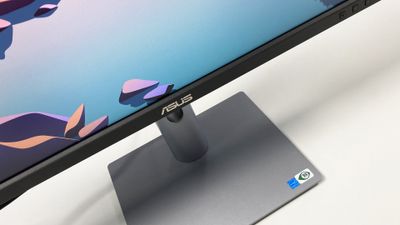
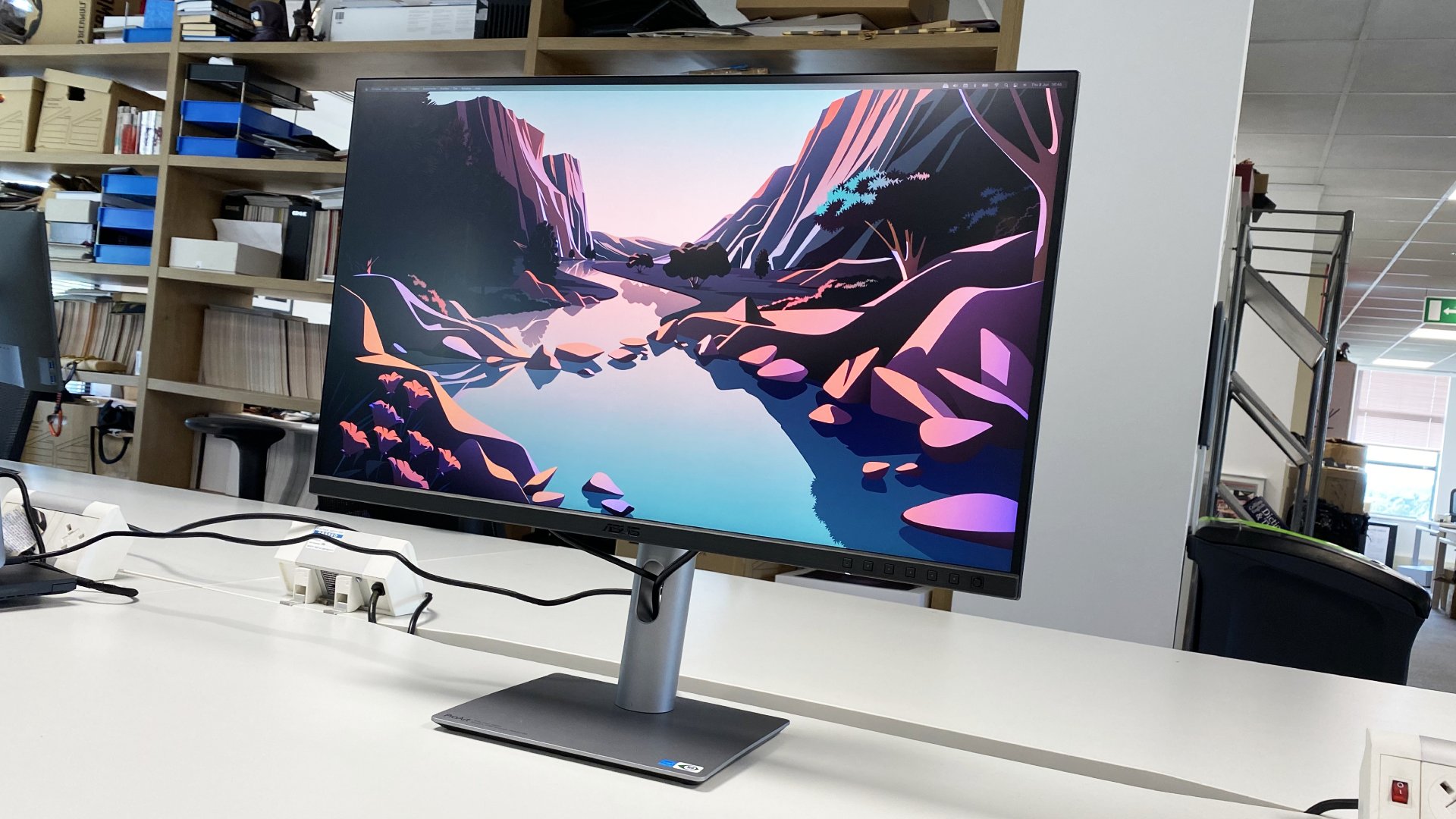
Specifications
Reasons to buy
Reasons to avoid
The Asus ProArt PA279CRV offers one of the most pro-level monitors we've ever reviewed without the usual premium price-tag attached.
Features abound here, as we discovered during our review. Of course, the included monitor arm lets you easily swivel the screen from landscape to portrait, which is always welcome. We also found the IPS panel boasts excellent color space coverage, factory calibration, including Calman verification, and USB-C connectivity with 96W power delivery to daisy chain together multiple monitors.
The design is fairly minimalist, with the usual slim bezels found on modern monitors, although if we have a complaint, it's that the monitor does feel somewhat plasticky and not nearly as robust as others we've tested. There isn't any true HDR support, although you can run a HDR signal. Nor did we find this an especially bright display, measuring just 250nits with a contrast ratio of 1000:1. However, for the price (compared to high-end monitors at least), we reckon this is an acceptable trade-off. For the money, this is a pretty magnificent vertical monitor.
Read our full Asus ProArt PA279CRV review
Best portable vertical monitor
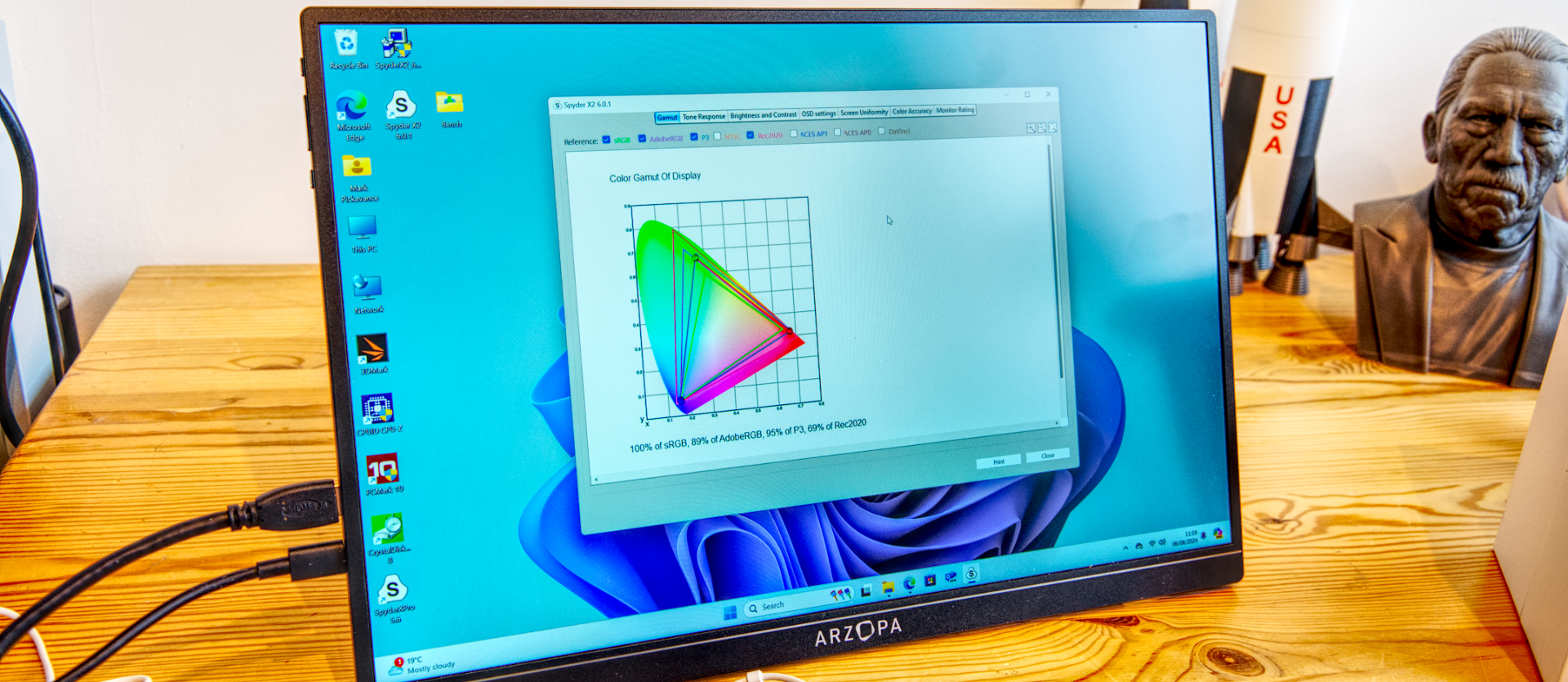
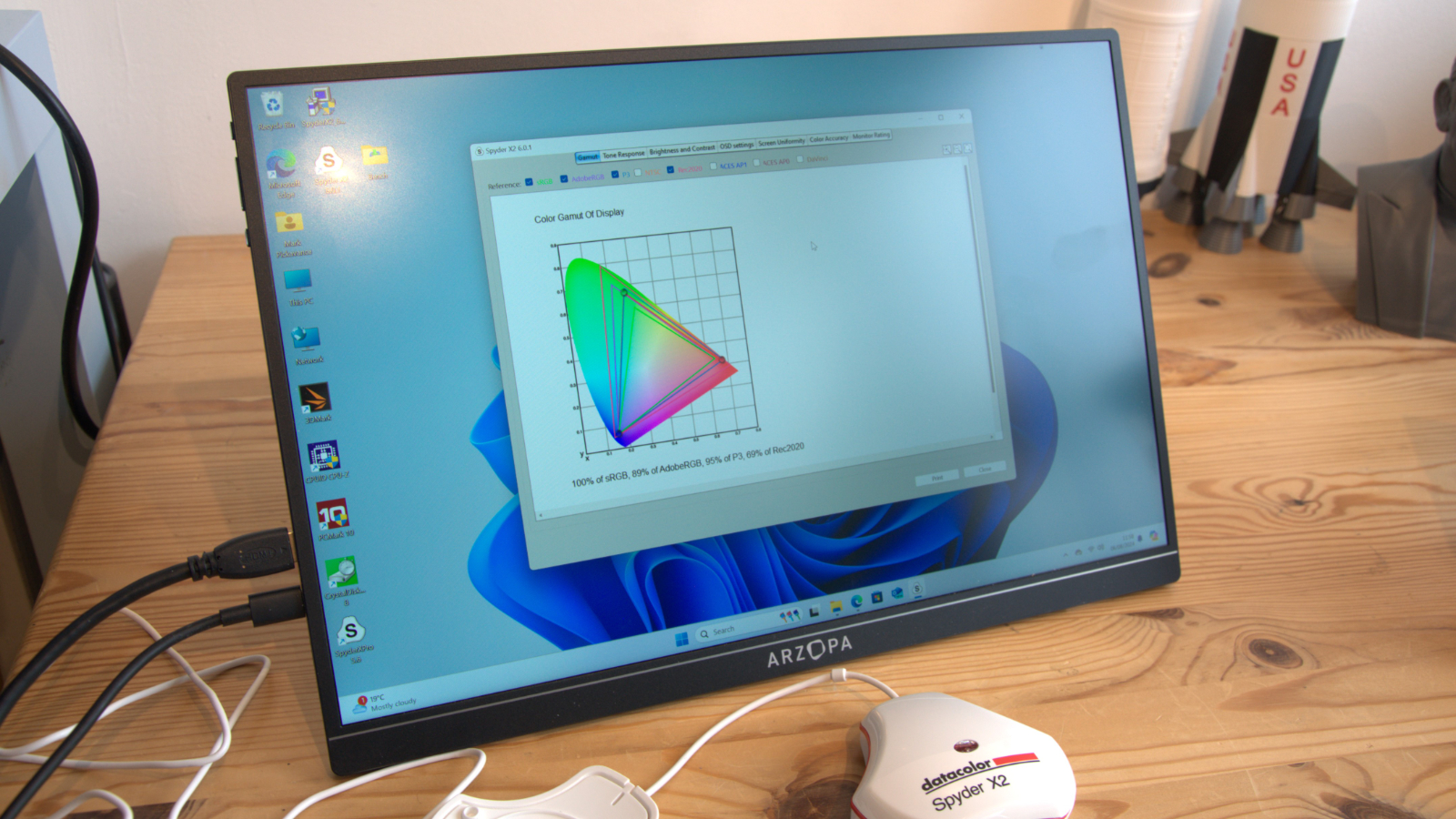
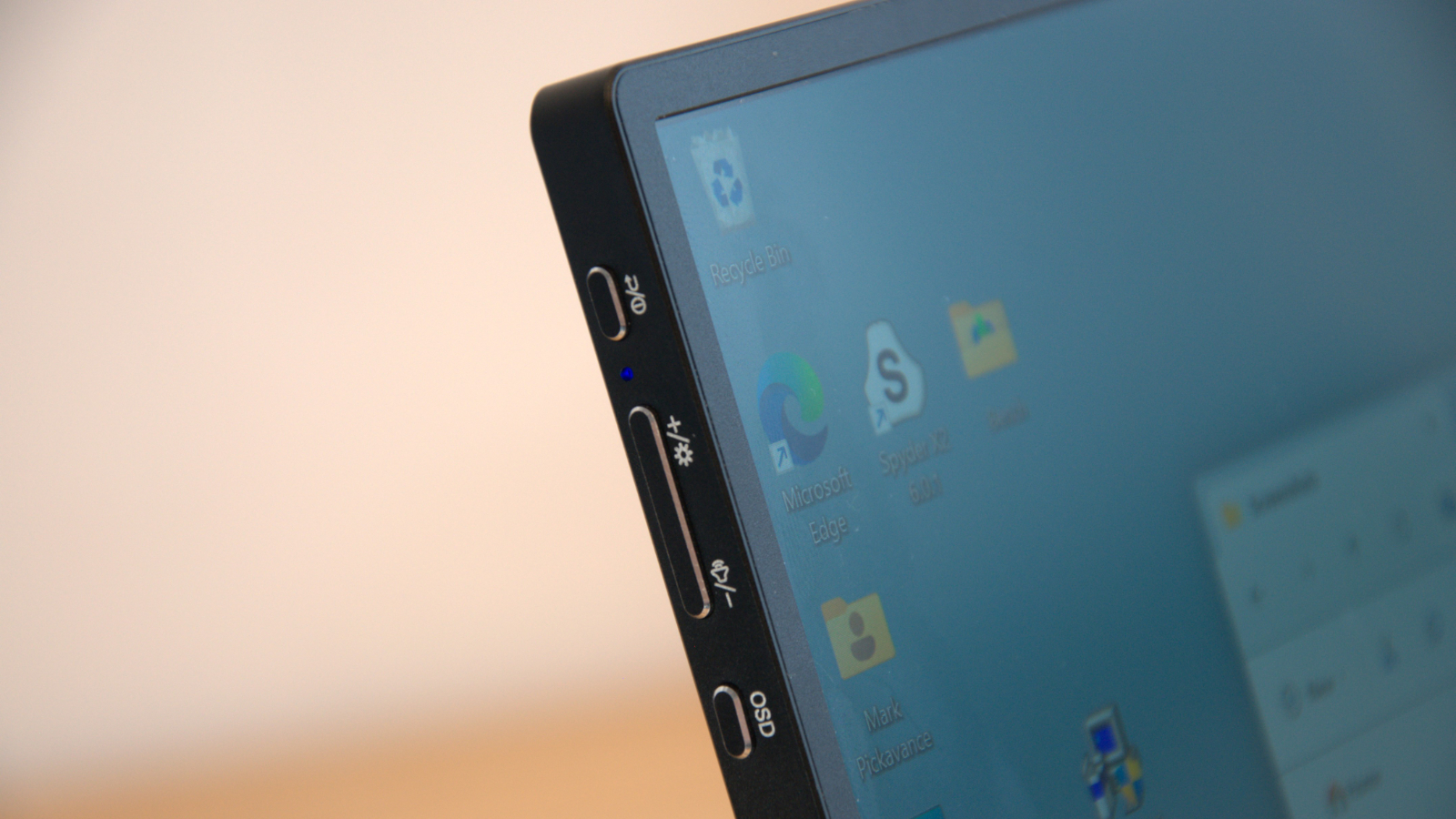
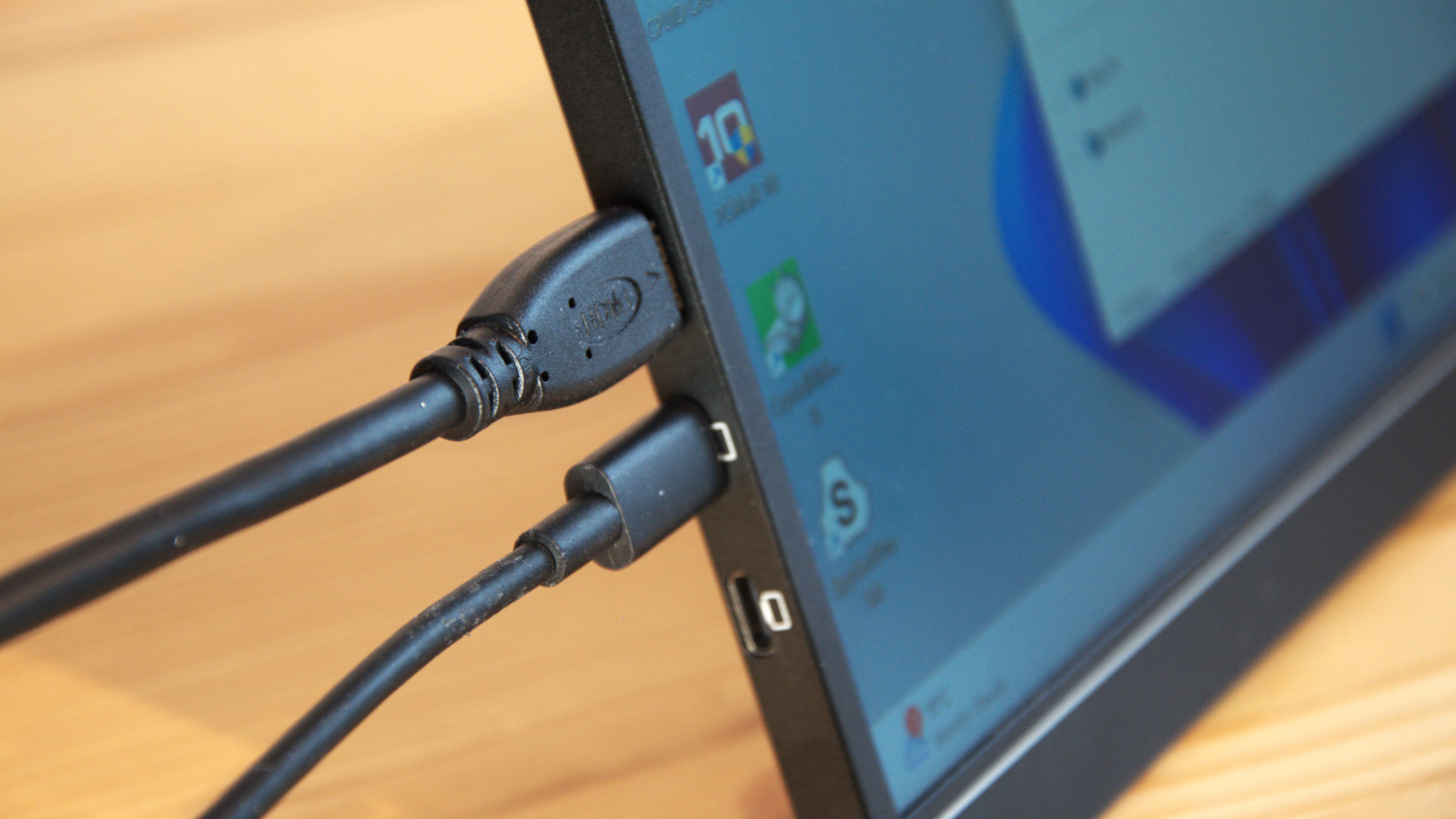
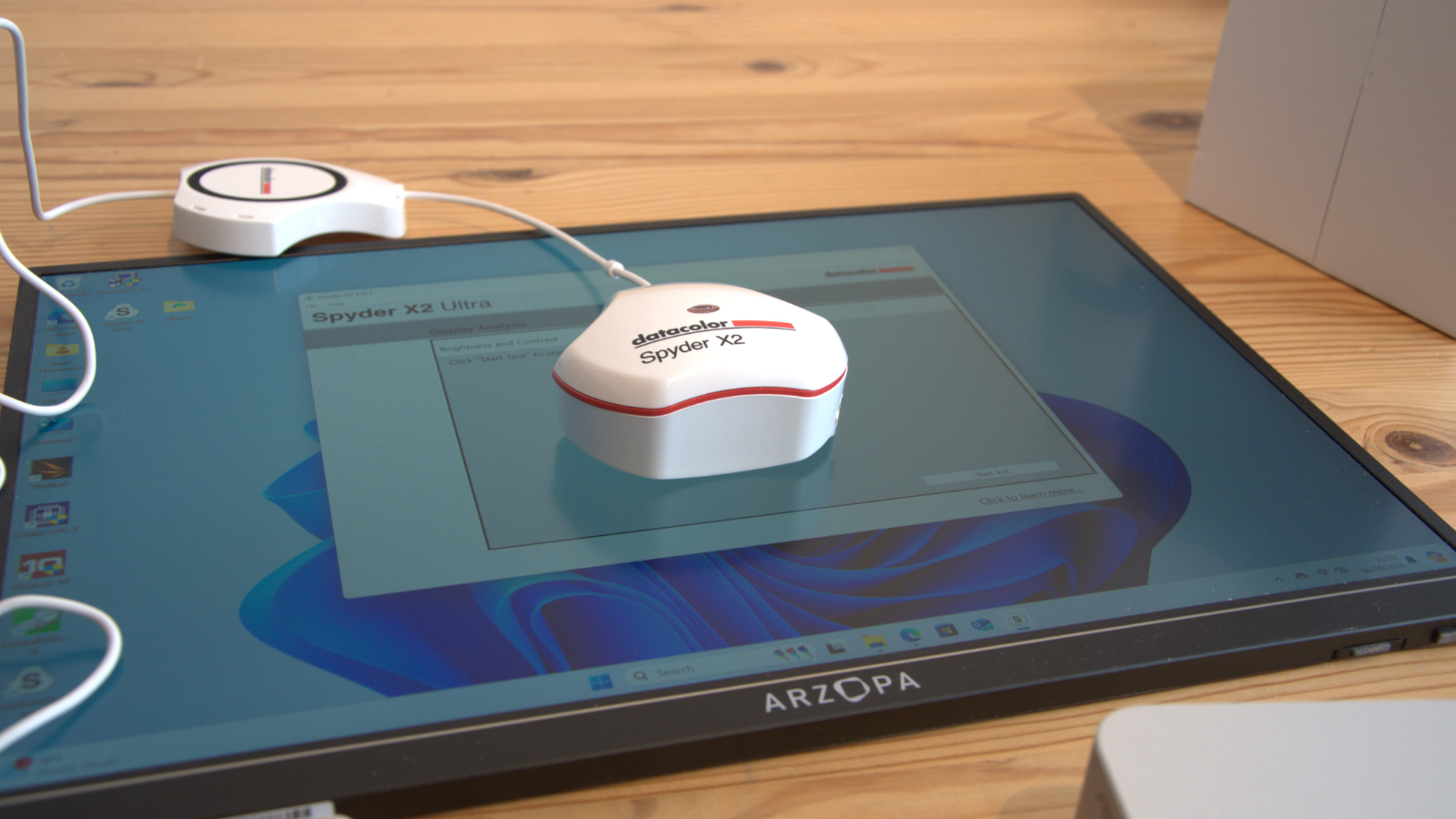
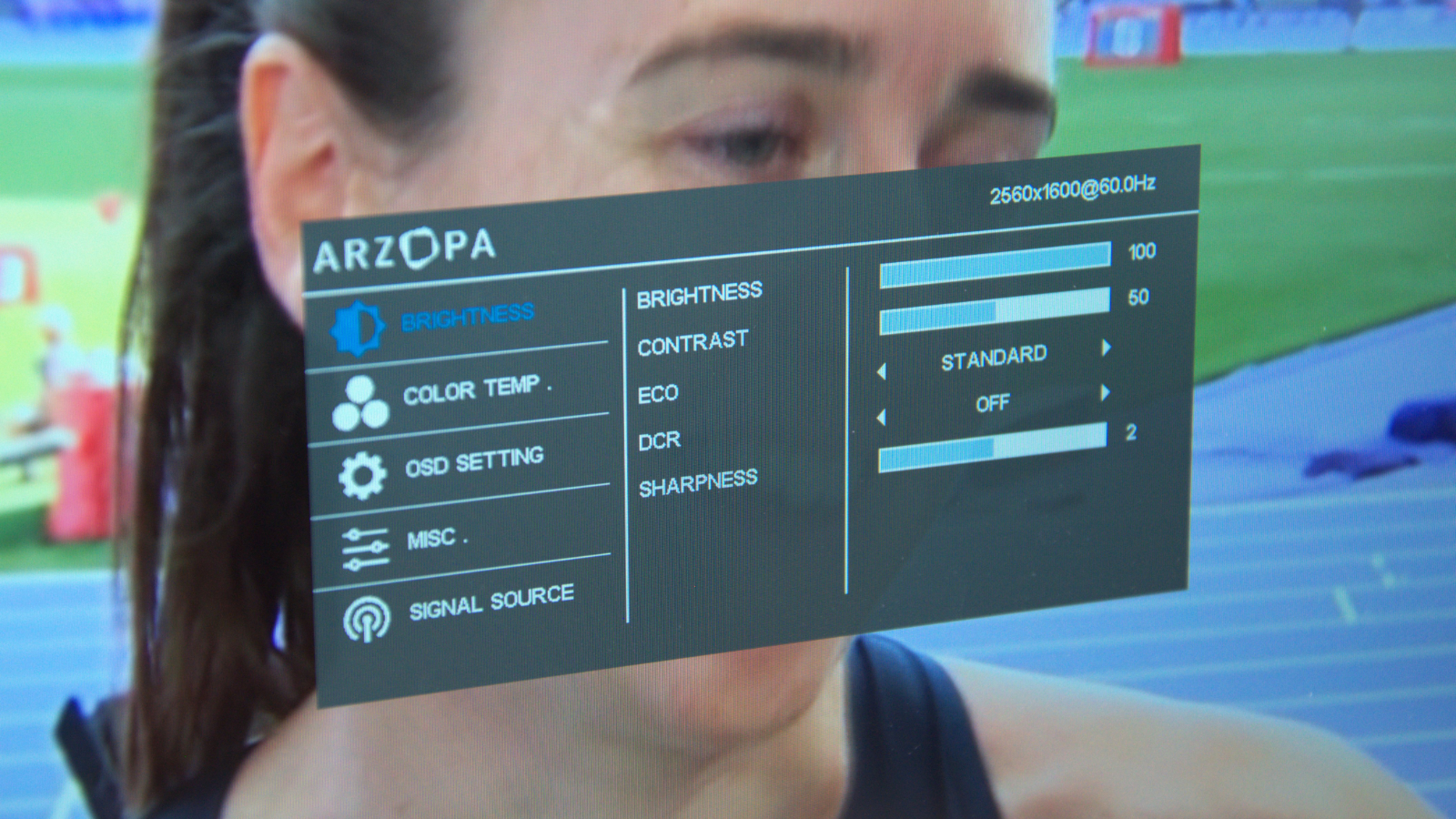
Specifications
Reasons to buy
Reasons to avoid
If you're looking for a vertical monitor you can carry across multiple locations, the Arzopa Z1RC is an excellent option. This is a 16in display that boasts 2.5K resolution, 100% sRGB color gamut, and in our experience, worked flawlessly in both landscape and portrait mode. Better still, it's reasonably cheap, too.
During our review, we liked the simple design here - it's unfussy, and ideal for carting around (although we recommend getting a protective sleeve or case). There's no integrated power supply here, it needs to be run off the mains, but on the flip-side, that helps keep the weight down to a respectable 763g. Port selection is also limited to two USB-C ports and a Mini HDMI, which will likely be enough for most people. Our favorite feature with this portable vertical monitor is the built-in kickstand, which supports both orientations. We had no issues using this throughout testing.
It's not perfect, of course. While Arzopa states this reaches 1200:1 contrast ratio and 500 nits brightness, our own benchmarks resulted in something closer to 1060:1 and 400 nits. We would've also liked to see better viewing angle range, as 85-degrees doesn't feel quite enough. Nor is there a touchscreen.
Overall, considering it's priced below $200, with a resolution to suit its size, and boasts features most people will require, it's an excellent pick.
Read our full Arzopa Z1RC portable monitor review
Best curved vertical monitor
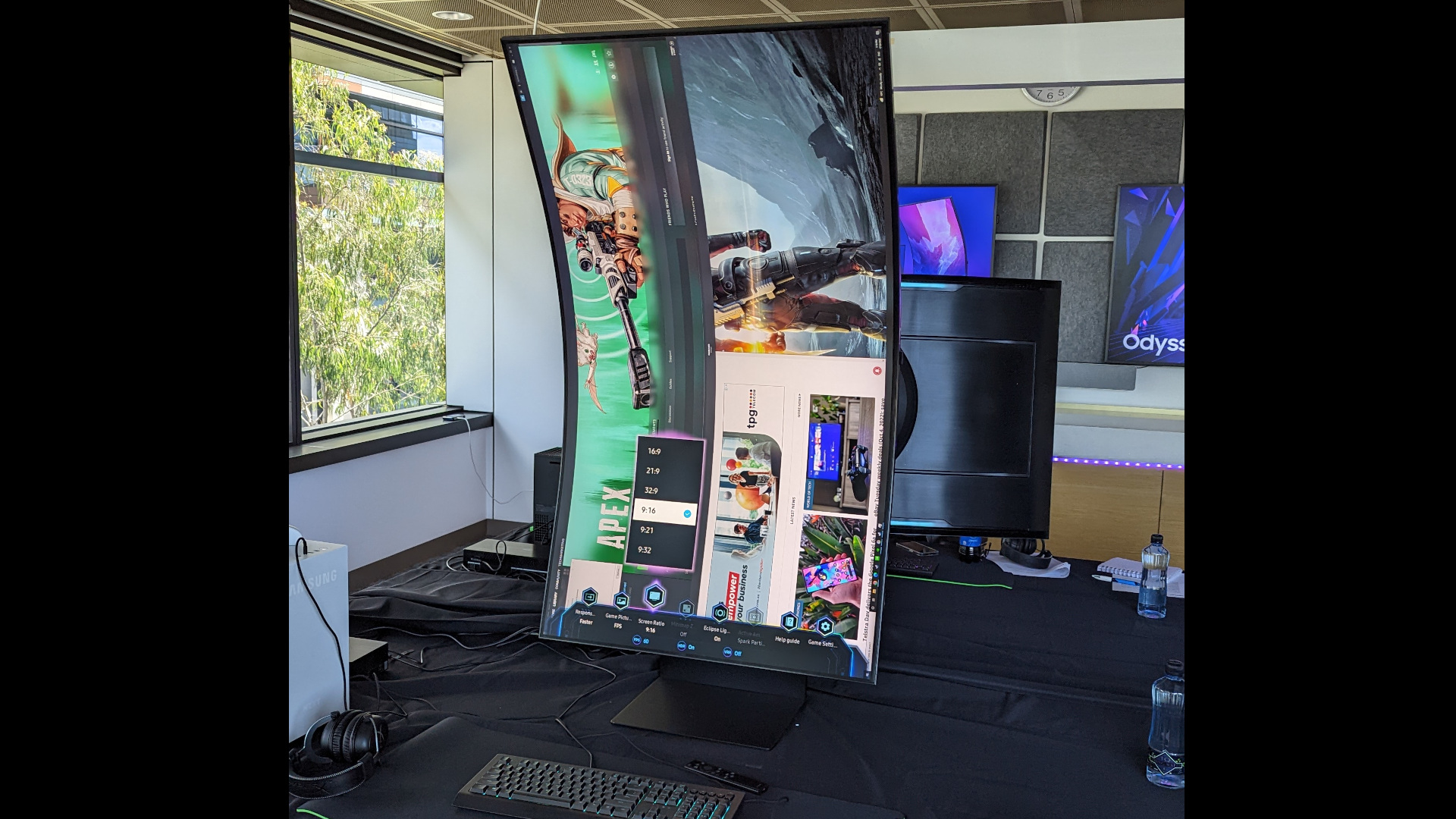




Specifications
Reasons to buy
Reasons to avoid
Using the Samsung 55-inch Odyssey Ark monitor is incredible. That big screen, with its shapely curve, creates one of the most immersive experiences you'll get from a monitor.
But what really separates this model from so many others is the Cockpit Mode, which lets you spin the screen 90-degrees into a vertical position. And, my word, it's a sight to behold. You're also able to raise, lower, and tilt the display to get it into the best position for your set-up.
In testing this, we found the screen to be bright, vivid, vibrant - particularly when used for gaming, watching movies, or content creation. This is where a panel of this size really shows its worth, thanks to 600 nits brightness.
We did not some limitations, though - not least the 55in display is unlikely to fit into most average workspace set-ups. For starters, you can only display a single physical input source at any one time, which may be a deal-breaker for multi-taskers. And we would've really loved to see an OLED panel here, to really bring that stunning picture quality to life. The Mini LED backlight certainly beats standard LED displays, but it's nowhere near as good as OLED. But for anyone who needs a curved vertical monitor, this unit mostly delivers the goods.
Read our full Samsung 55-inch Odyssey Ark review
Best vertical monitors: FAQs
Which is the best vertical monitor?
The Dell UltraSharp U2723QE is the best vertical monitor overall, boasting a vibrant 27-inch screen with 4K (3840 x 2160) resolution, different color spaces (sRGB, Rec. 709, and DCI-P3), and Low Blue Light output, as well as anti-glare finish and tons of connectivity options.
Alternatively, you can also go for the LG DualUp 28MQ780-B which comes with a unique 18:16 aspect ratio, making it perfect for photo/video editing and other creative tasks. Plus, given that it's essentially two standard 2560 x 1440 monitors stacked on top of each other, you can split the screen in half and use the traditional landscape configuration for your day-to-day activities.
Can I use a regular monitor in portrait mode?
Short answer – yes.
You can absolutely use a standard monitor in portrait mode which essentially turns it into a vertical monitor. However, the catch here is that the monitor should have an adjustable stand (or you can get one separately) that allows you to position it upright.
Dedicated vertical monitors come with ergonomic stands where all that you have to do to achieve the vertical configuration is rotate the monitor 90 degrees – without having to detach it from the stand and then reattach it.
Do I need the best vertical monitor?
Vertical monitors are extremely useful for those who spend long hours in front of the screen. These monitors are designed to reduce neck strain by reducing constant head and wrist movement. Next, the longer vertical field makes vertical monitors ideal solutions for reading and editing documents, coding, or managing a Discord channel on your second monitor.
If you're using a vertical monitor as your second display, you can significantly enhance your multitasking abilities, as you'll be able to launch multiple documents and/or applications side by side. Another important advantage of vertical monitors is how much space they save. Their upright orientation makes them perfect for those with limited room on their desk. Additionally, let’s not forget how aesthetically pleasing a setup with a vertical monitor looks.
What is the best size for a vertical monitor?
Anywhere between 24 and 27 inches is considered ideal for vertical monitors. However, depending on your needs, you can go for a crisp 15.6-inch display or even one of the best curved monitors out there, the Samsung 55-inch Odyssey Ark Curved which features an impressive 55-inch screen.
And as far as the aspect ratio is concerned, the 9:16 orientation is the most standard and for many the best of the lot. That said, having tested the LG DualUp 28MQ780-B first-hand, the 18:16 ratio can be equally good, especially for photo/document editing, coding, and other business tasks.
How to choose the best vertical monitor for you
Before anything else, consider the screen size. Vertical monitors typically take less space on the horizontal, meaning even if you don't have a large desk, you can accommodate a monitor that's fairly large in size. However, if you plan on using the monitor in its horizontal configuration from time to time, you'll have to get one that suits your desk space and viewing distance.
Speaking of size, another important factor is the aspect ratio of the screen. Although you don't have much choice here, given that the 9:16 is as standard as they come (and you can't possibly use a 9:21 aspect ratio), a popular alternative is the 18:16 aspect ratio of the LG DualUp 28MQ780-B.
For reasonably clear images and text, prioritize monitors with at least 1920 x 1080 FHD resolution. However, depending on your needs and/or budget, you can opt for a 4K (3840 x 2160) display that will fetch you sharper visuals. This is especially true if you're looking for the best monitors for photo editing (or even the best monitors for graphic design), where detail and resolution are even more essential than the ability to switch between portrait and landscape mode.
Next up is the refresh rate of the screen. Simply put, the refresh rate is how many times the monitor refreshes per second. Most monitors have a 60Hz refresh rate, and that's more than enough most of the time, especially considering that you won't be using a vertical monitor for hardcore gaming. However, if you are looking for the best gaming monitors with vertical ability for heavy game play and/or streaming high-quality videos, we recommend going for a refresh rate of 144Hz or higher.
Although the portability of a vertical monitor isn't a primary consideration in most cases, if you want to be able to pack your vertical monitor in your bag and use it while you're on the go, such as on a train or in a remote workplace, the best portable monitors we've tested are extremely lightweight and touchscreen can be viable options.
Connectivity options cannot be ignored, either. Needless to say, you'd want an HDMI port, a DisplayPort, and multiple USB-A and USB-C ports so that you can not only connect various devices simultaneously but also use a port or two for charging purposes.
One of the most important factors when you're out shopping for a vertical monitor is your budget. Although there are numerous money-no-object monitors on the market that offer state-of-the-art technology and display quality, it's important to match your budget with your needs, including the screen size you’d be most comfortable with and the number of ports you absolutely need, as well as the panel type.
Now, as far as panel types are concerned, you cannot go wrong with an IPS panel. However, if you're after a strong contrast ratio and better black levels, you'd be better off with a VA panel.
How we test the best vertical monitors
Our hardware experts have tested hundreds of different displays, from the best monitors for MacBook Pro to the best monitors for video editing. So, we know what to watch out when testing vertical monitors - and what to avoid.
We test the best vertical monitors across five core aspects, including design, features, usability, performance, and value for money.
We begin by evaluating a monitor's design and build quality and whether it's able to remain steady in the vertical alignment. Ideally, it shouldn't swivel a lot. Then we test the functionality of all connectivity ports on offer, including HDMI, USB-A, USB-C, and DisplayPort. While we're at it, we also test the advertised charging capabilities (if available).
Next, we put the monitor through various real-world tests, such as launching multiple programs simultaneously and running intensive games to find out if there are any unexpected and unpleasant screen tearing or lags.
Although we weigh the monitors to judge their portability, it's not something we put a lot of emphasis on when ranking the products. However, what's incredibly important is the display quality. Does it churn out the refresh rates it claims? How is the display’s color accuracy, brightness, and visibility in low-light conditions? Is the resolution good given the size and price of the monitor? These are some questions we find answers to.
For accurate results, we compare various vertical monitors side-by-side. This gives us a clear understanding of where each product stands in comparison to its peers.
We tested all the best monitors for the home and office - and where's what we recommend.
Are you a pro? Subscribe to our newsletter
Sign up to the TechRadar Pro newsletter to get all the top news, opinion, features and guidance your business needs to succeed!

Steve is B2B Editor for Creative & Hardware at TechRadar Pro. He began in tech journalism reviewing photo editors and video editing software at Web User magazine, and covered technology news, features, and how-to guides. Today, he and his team of expert reviewers test out a range of creative software, hardware, and office furniture. Once upon a time, he wrote TV commercials and movie trailers. Relentless champion of the Oxford comma.